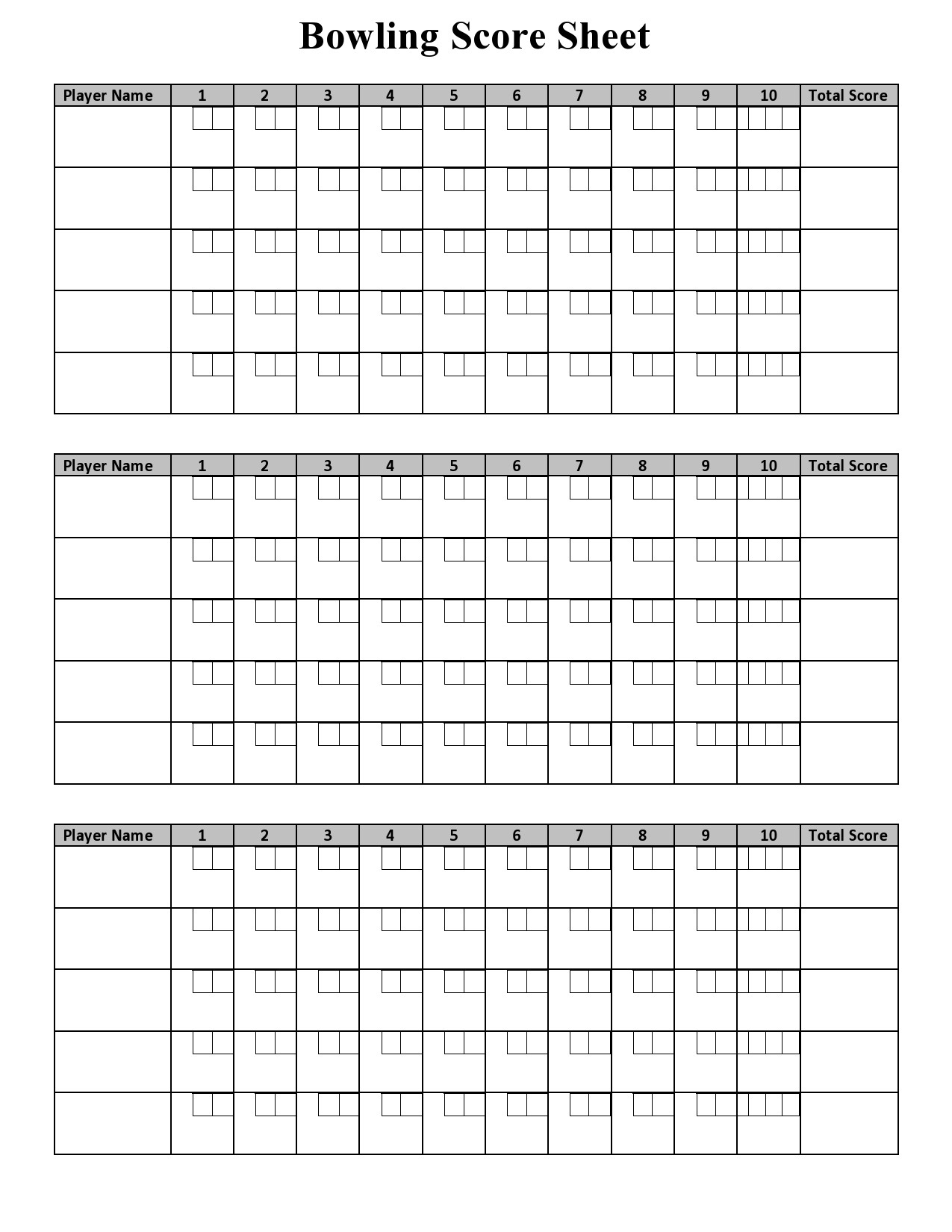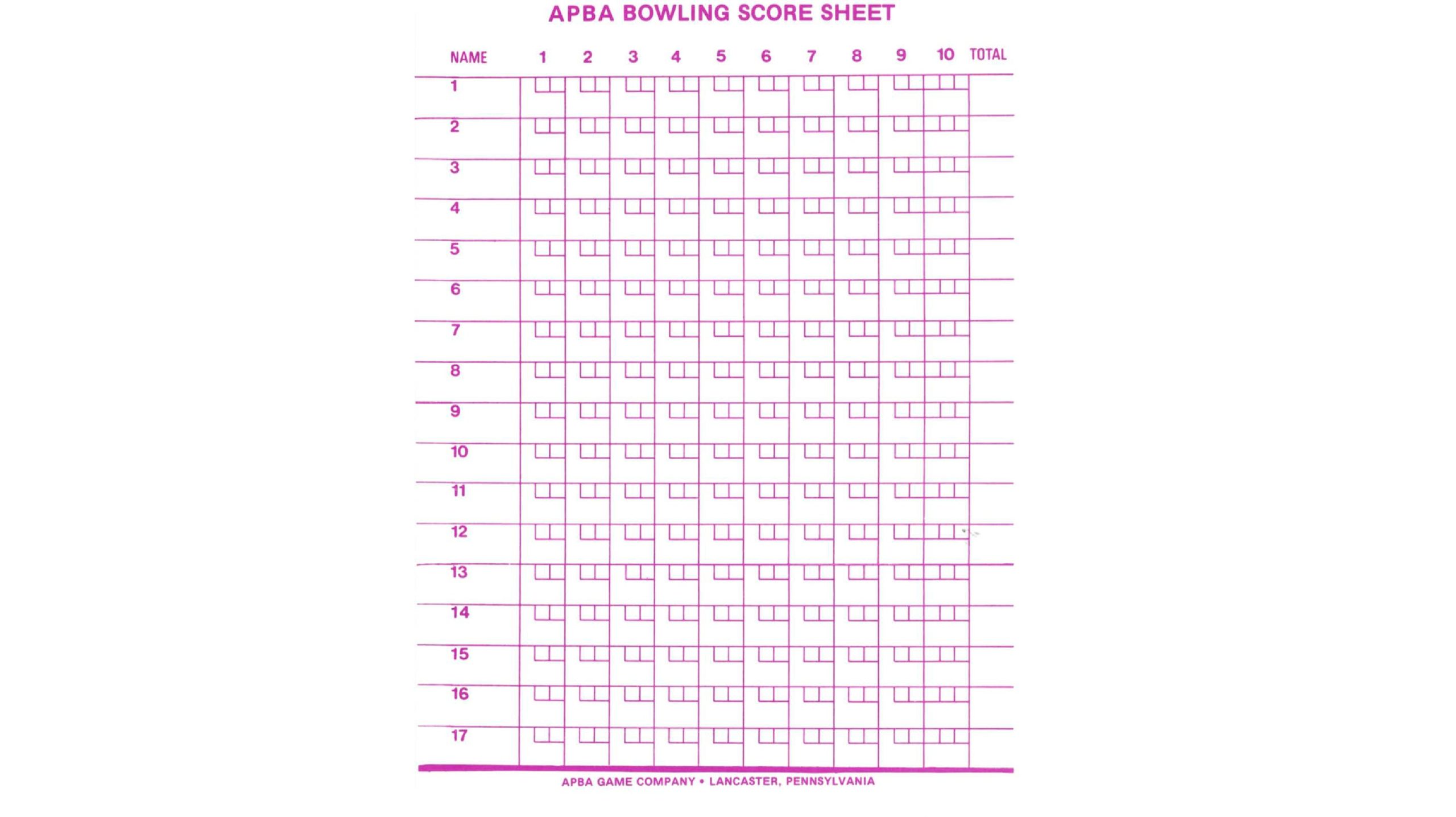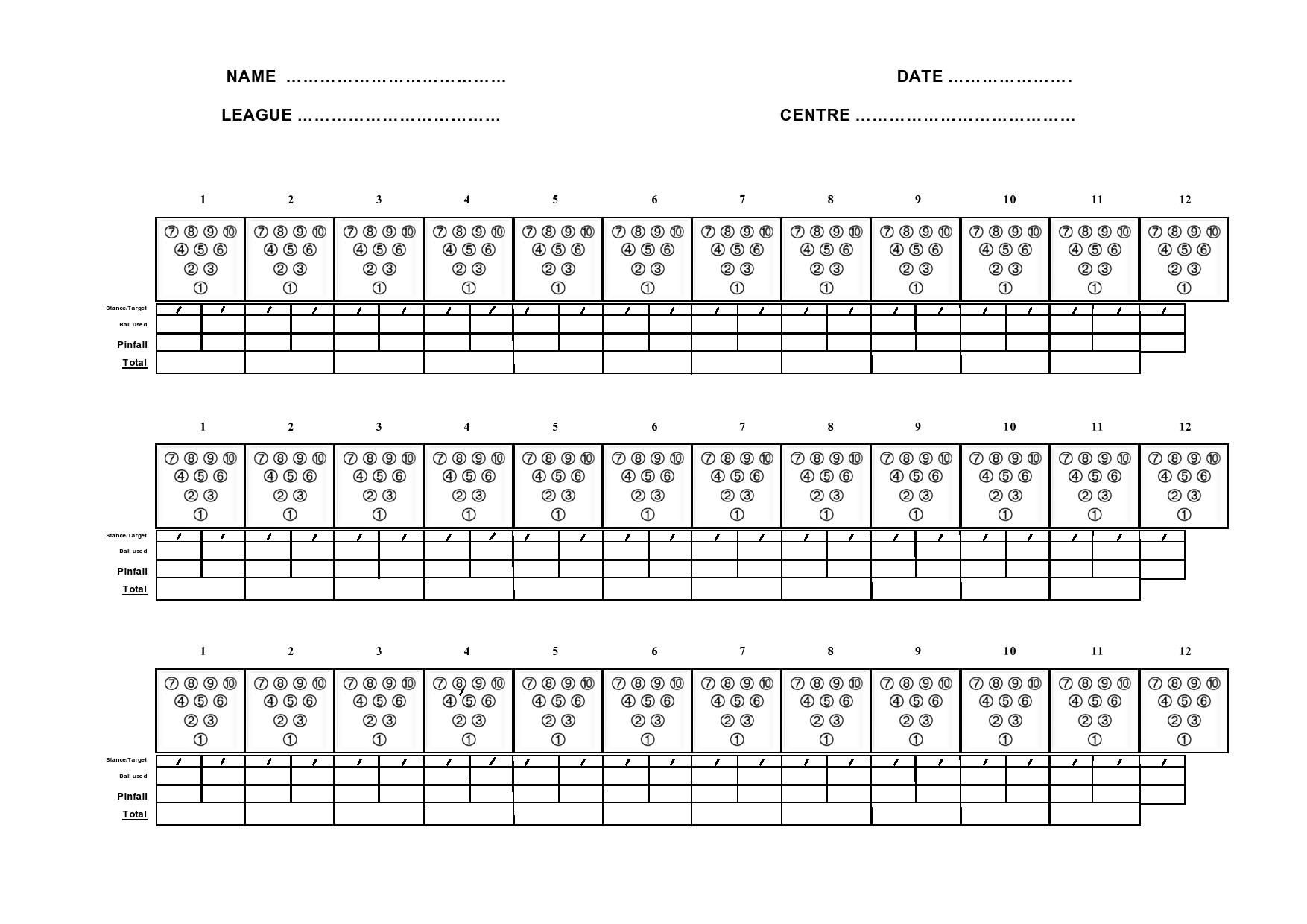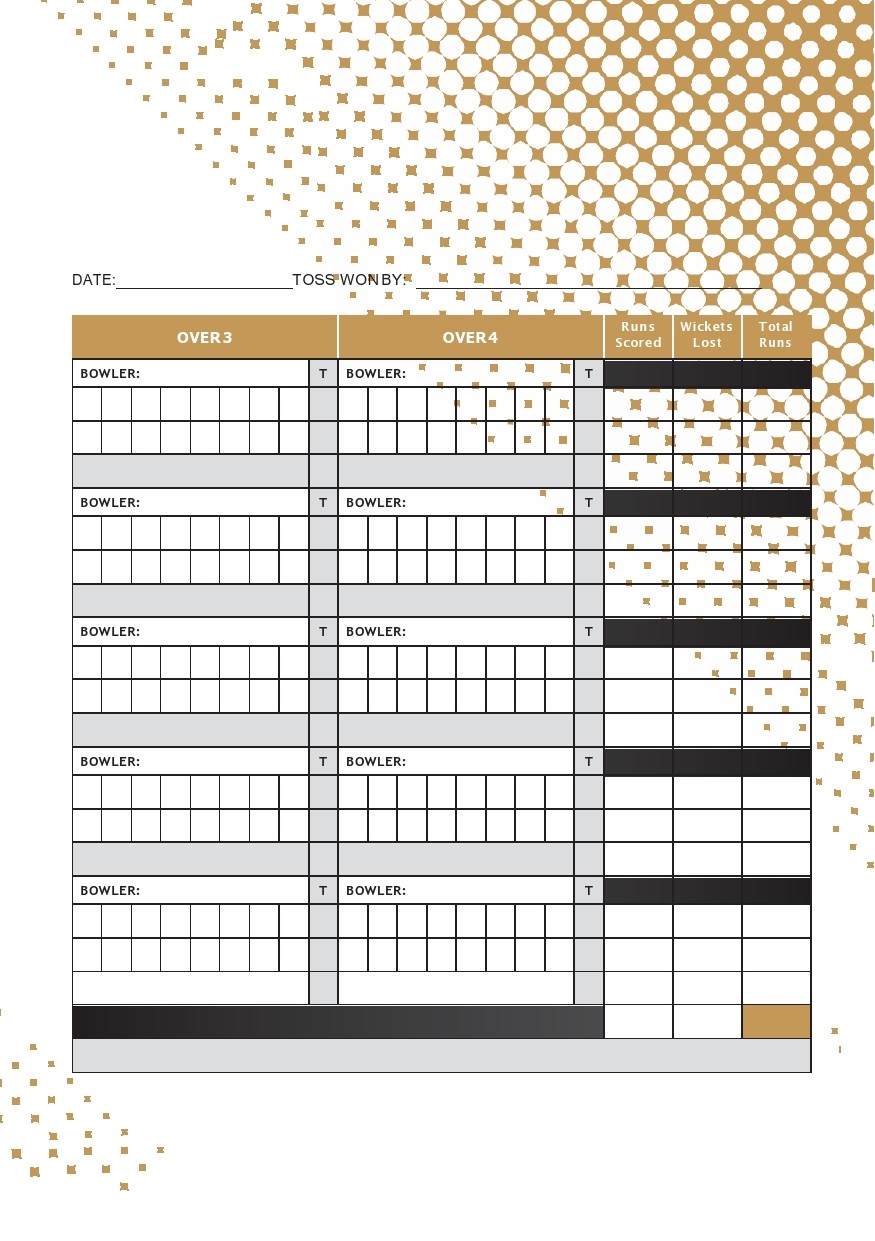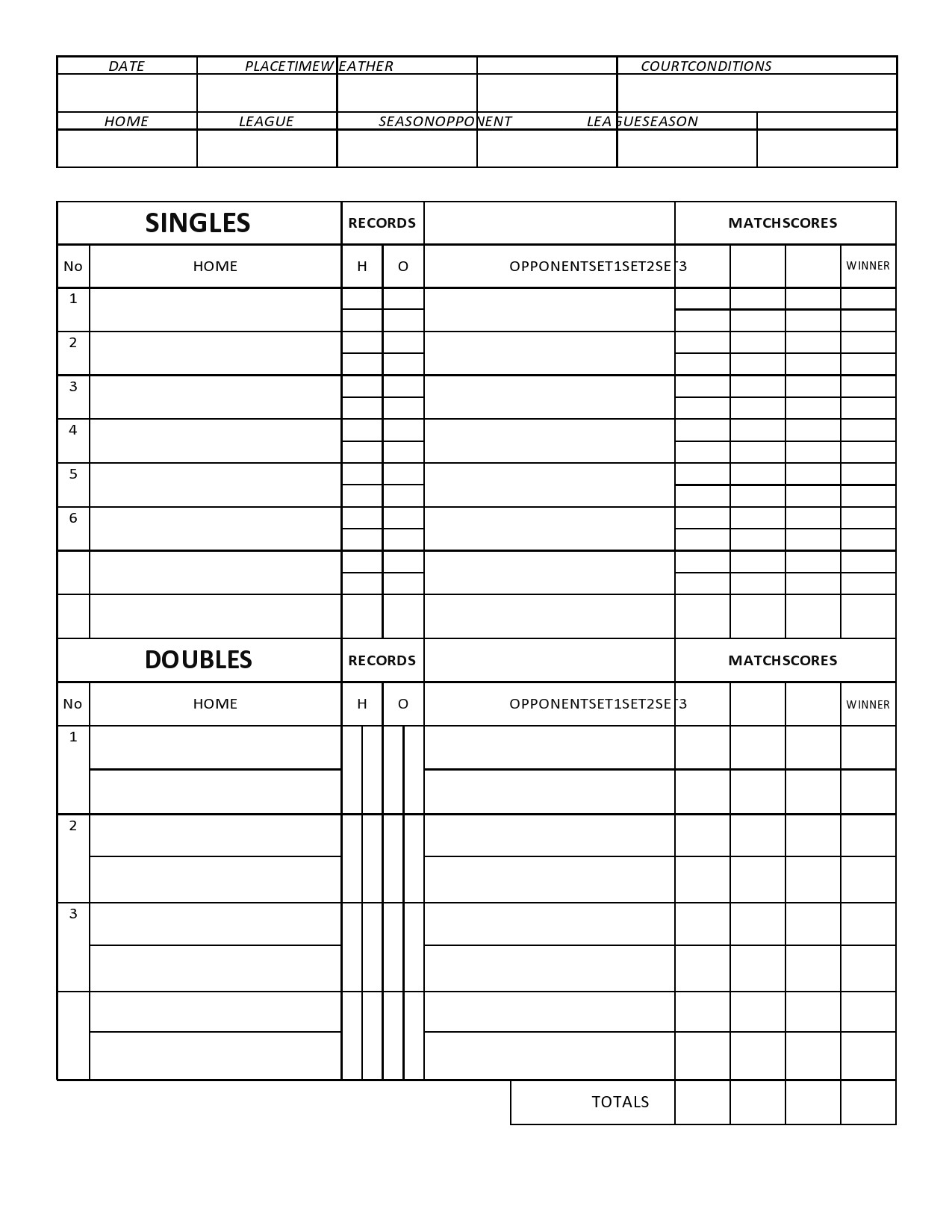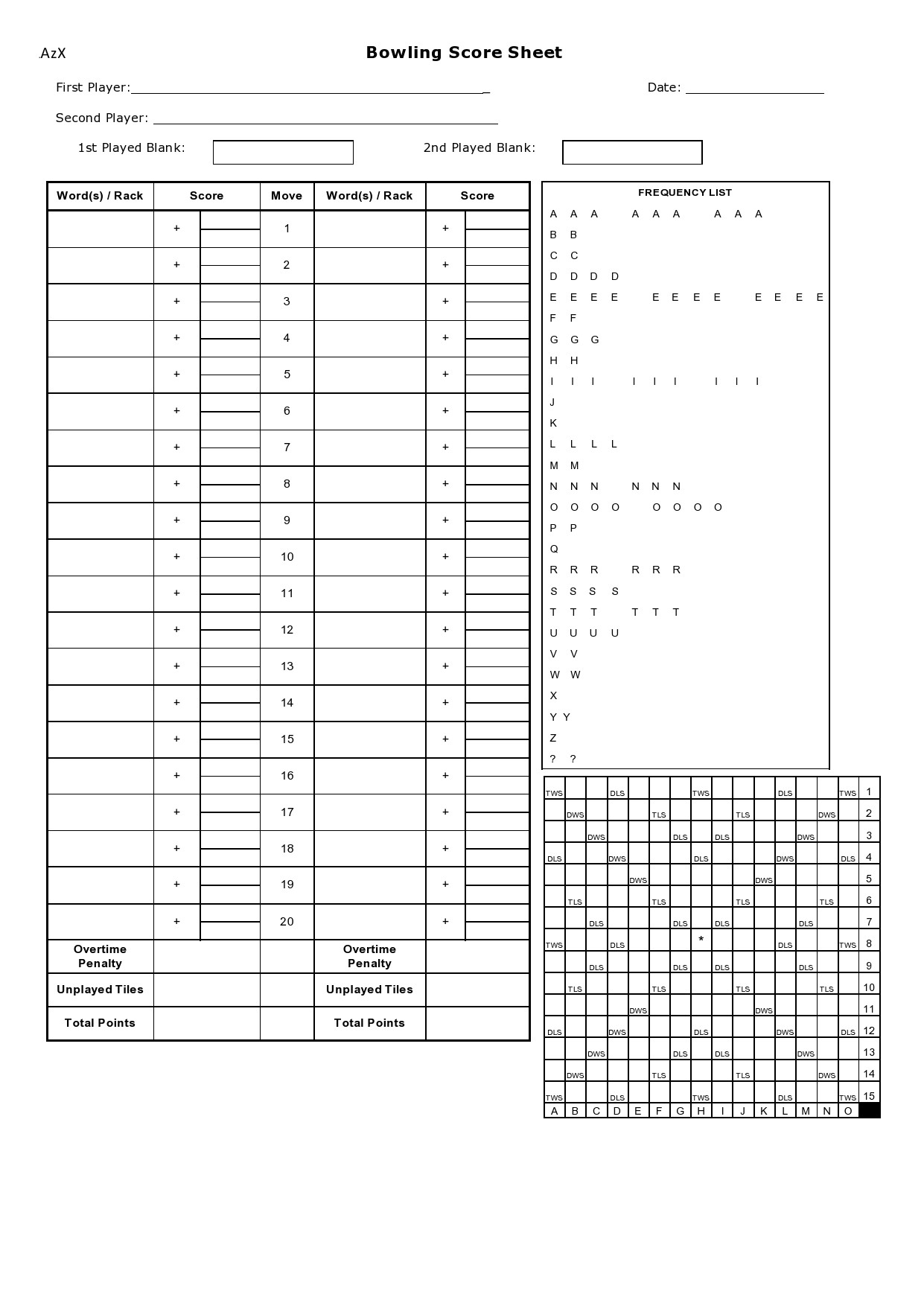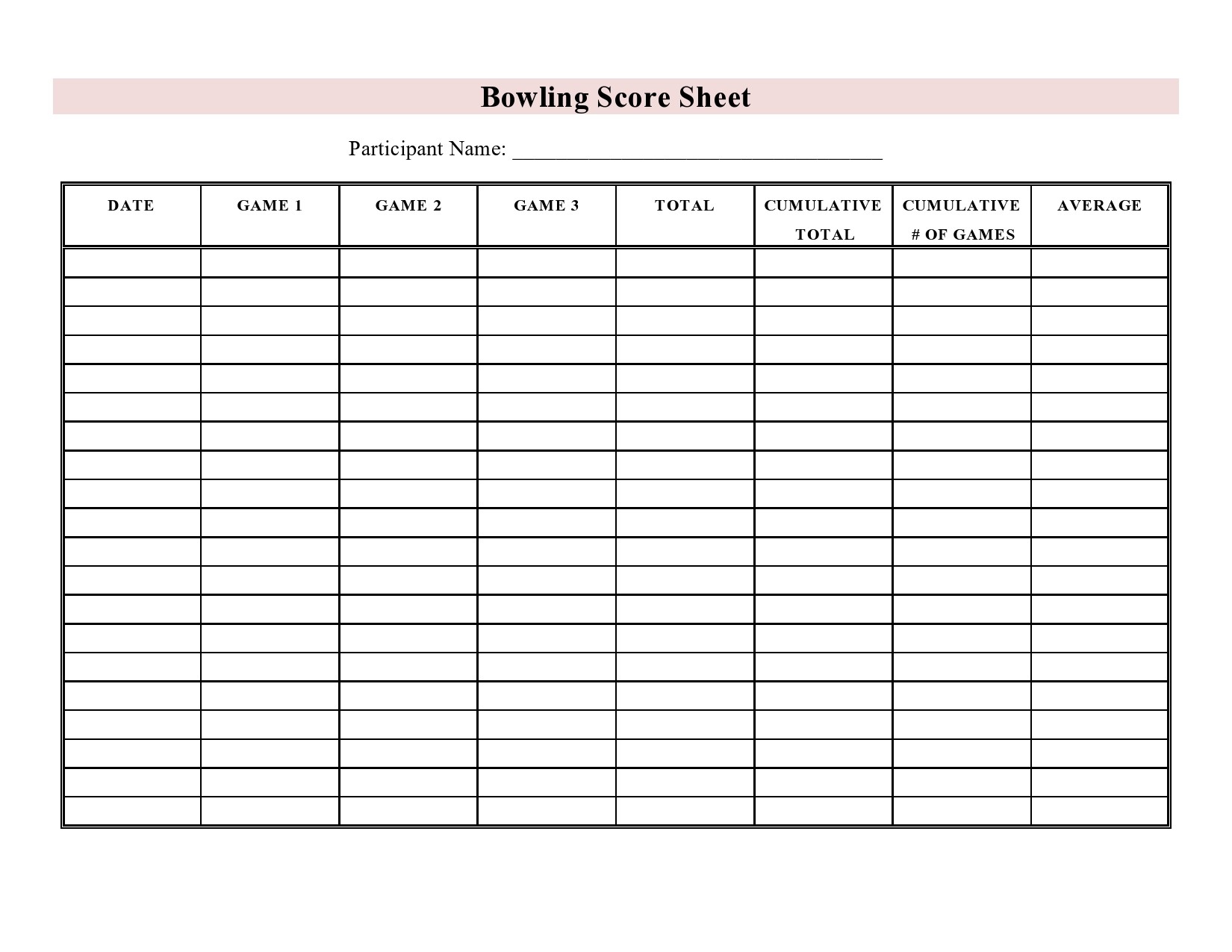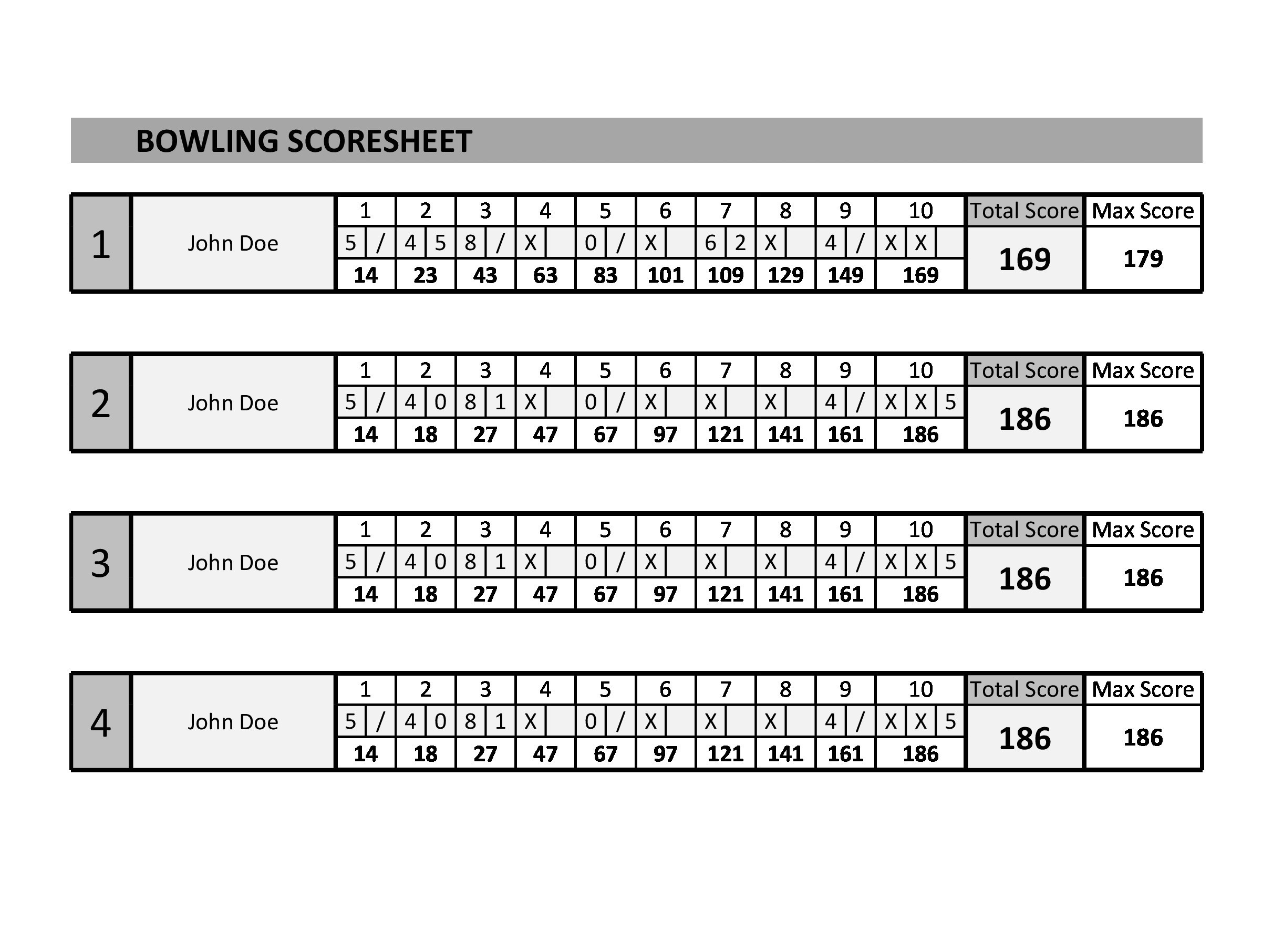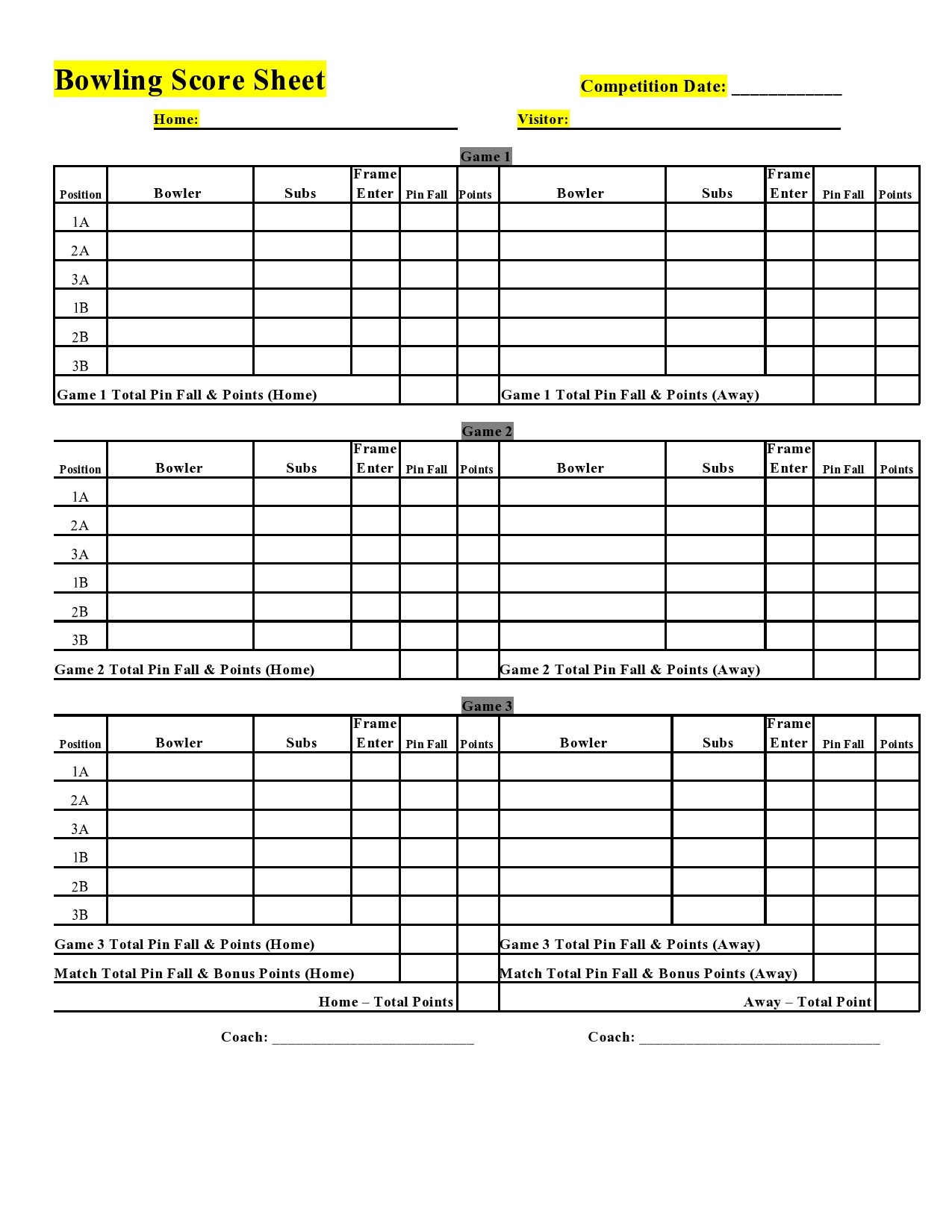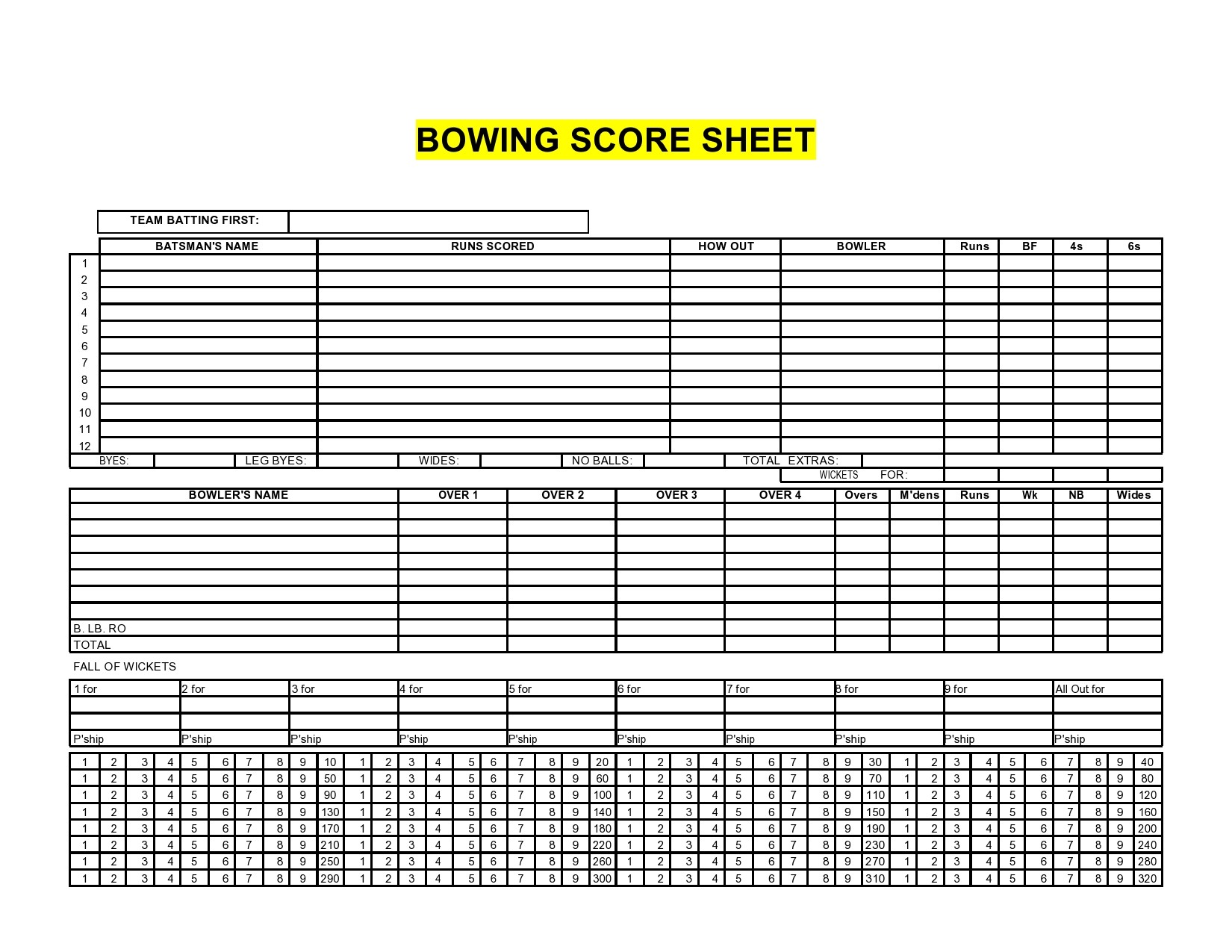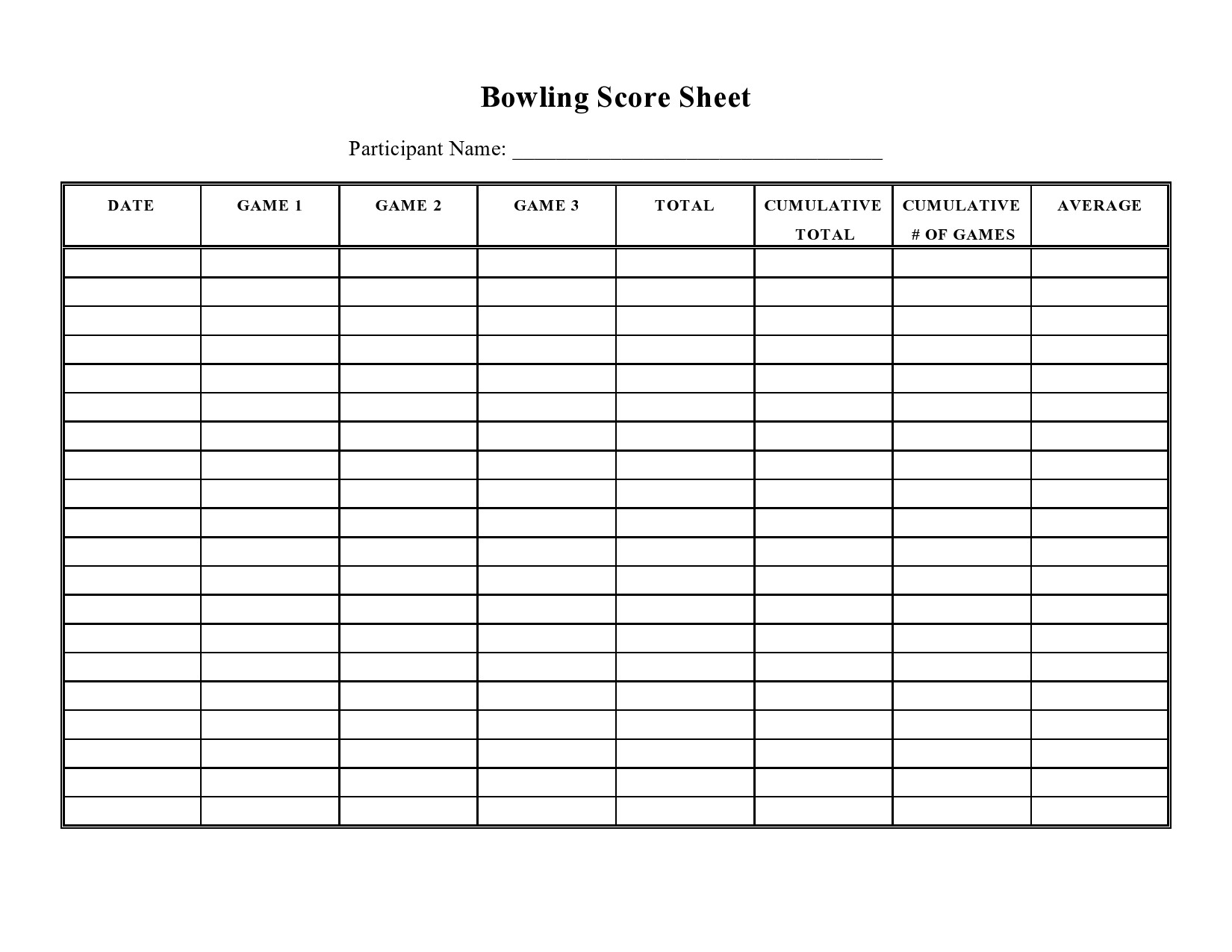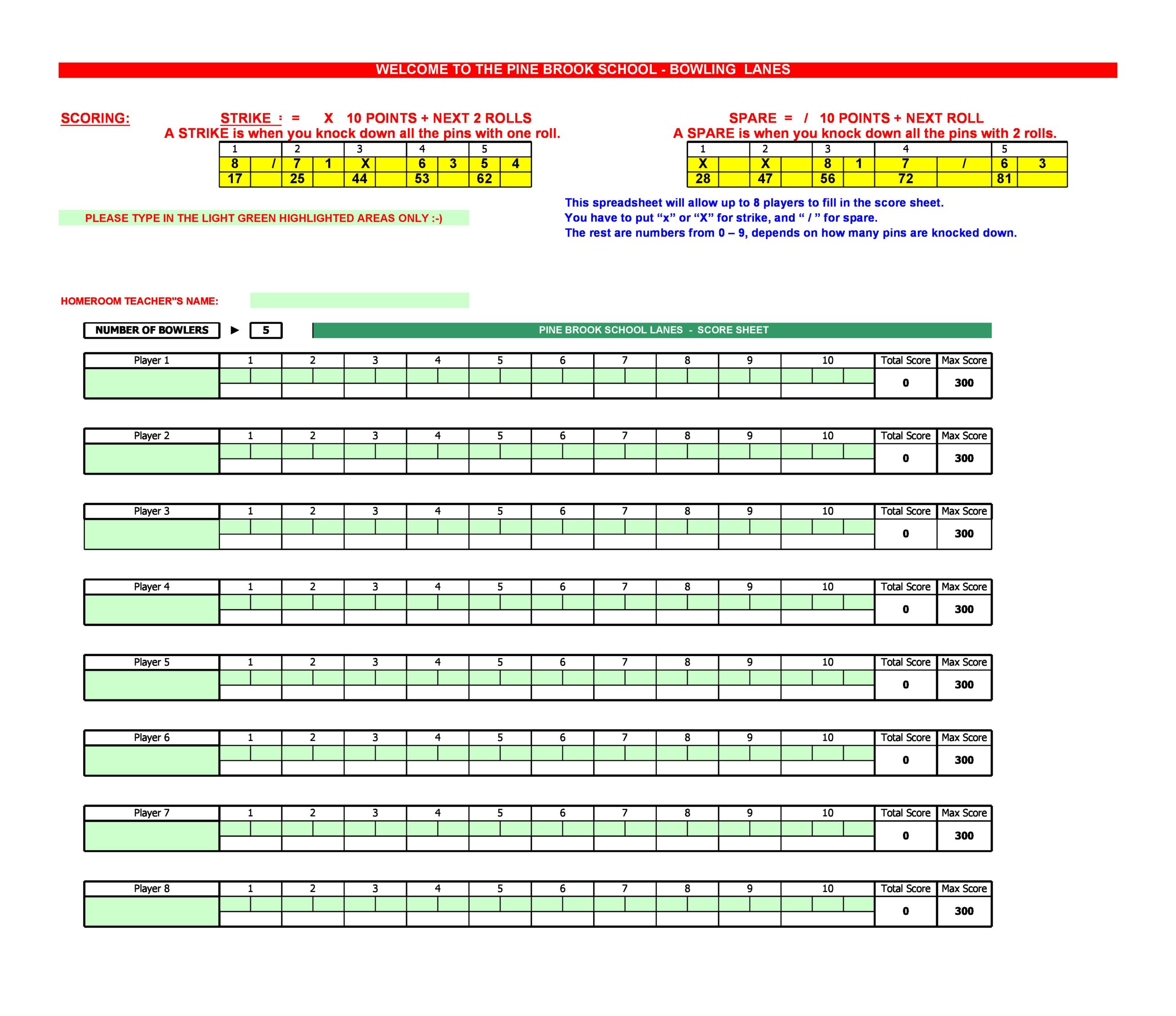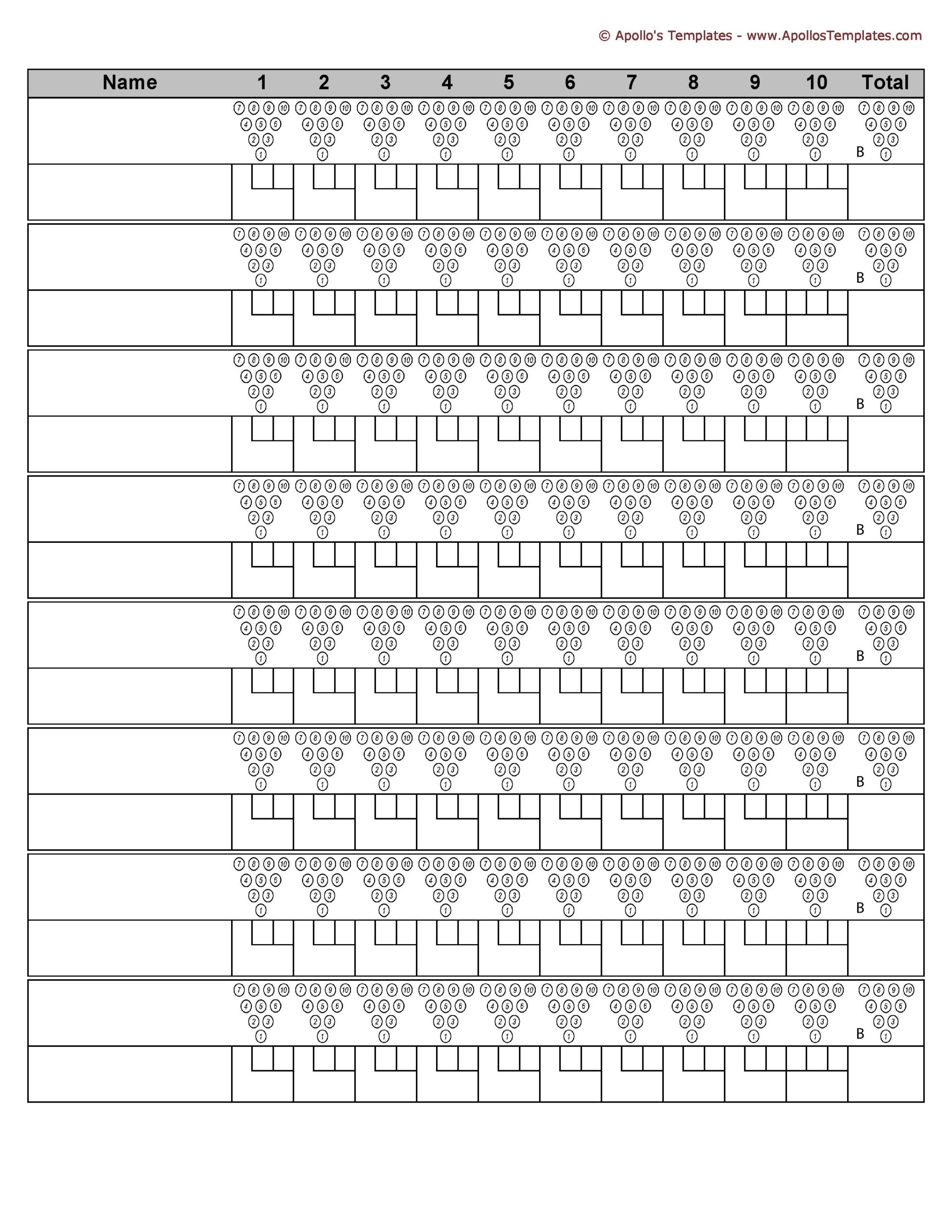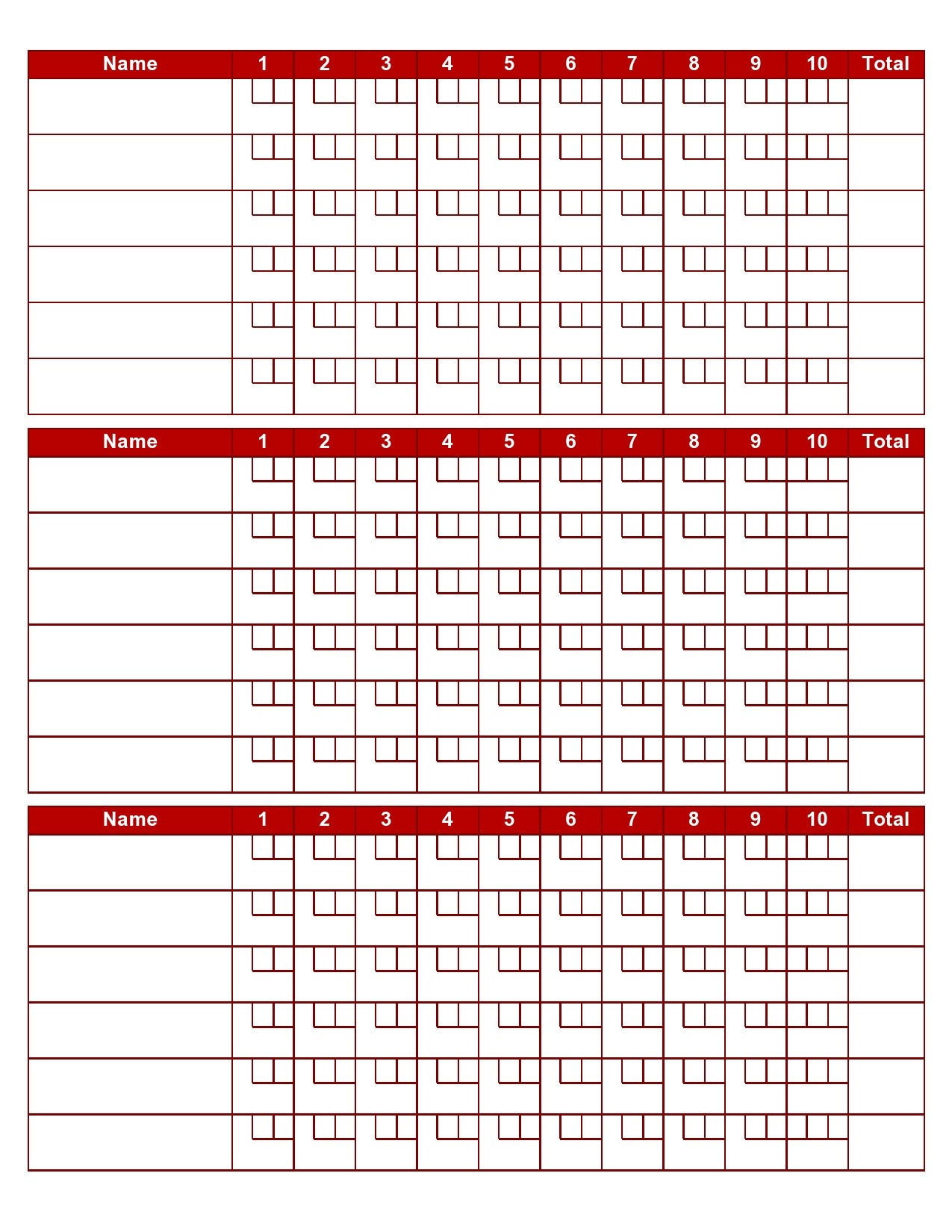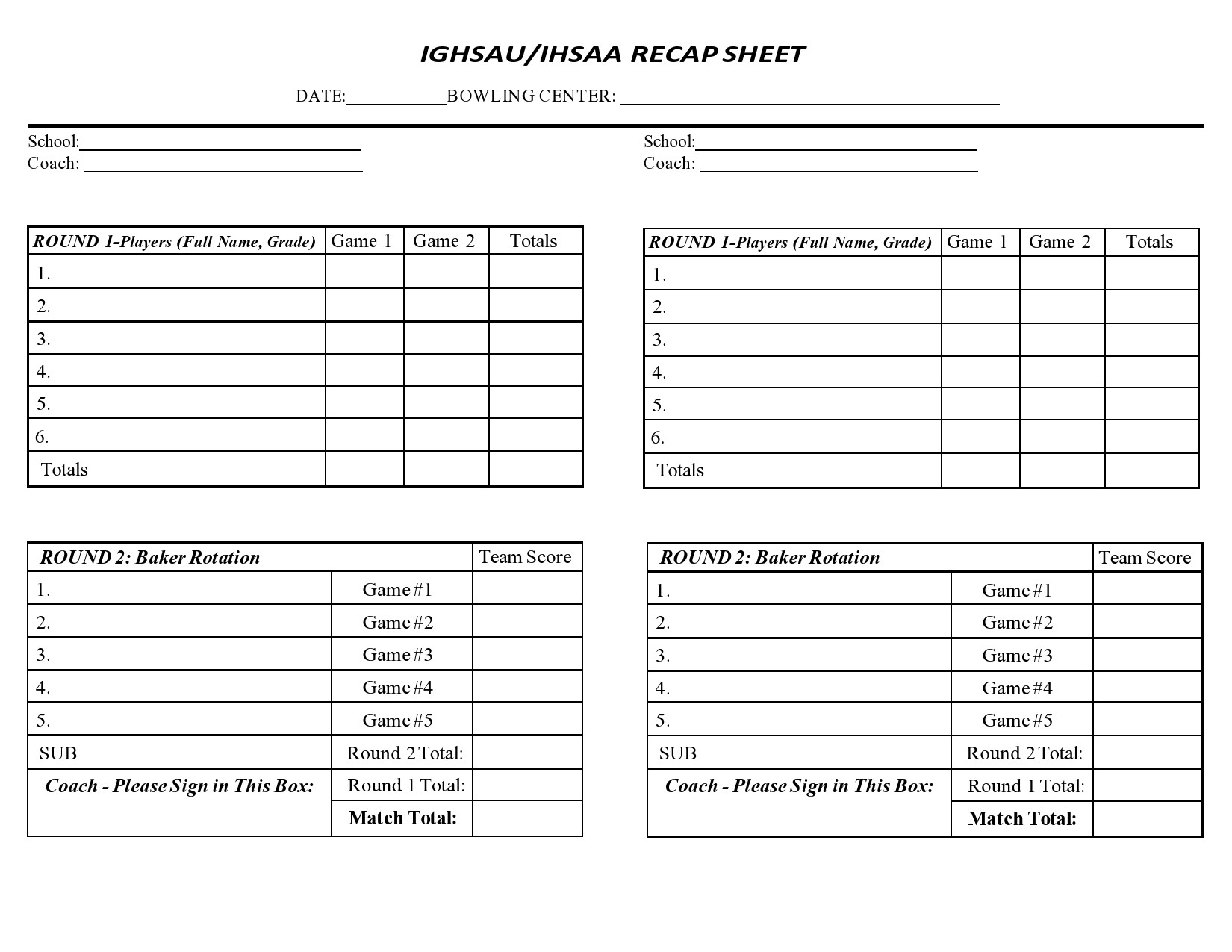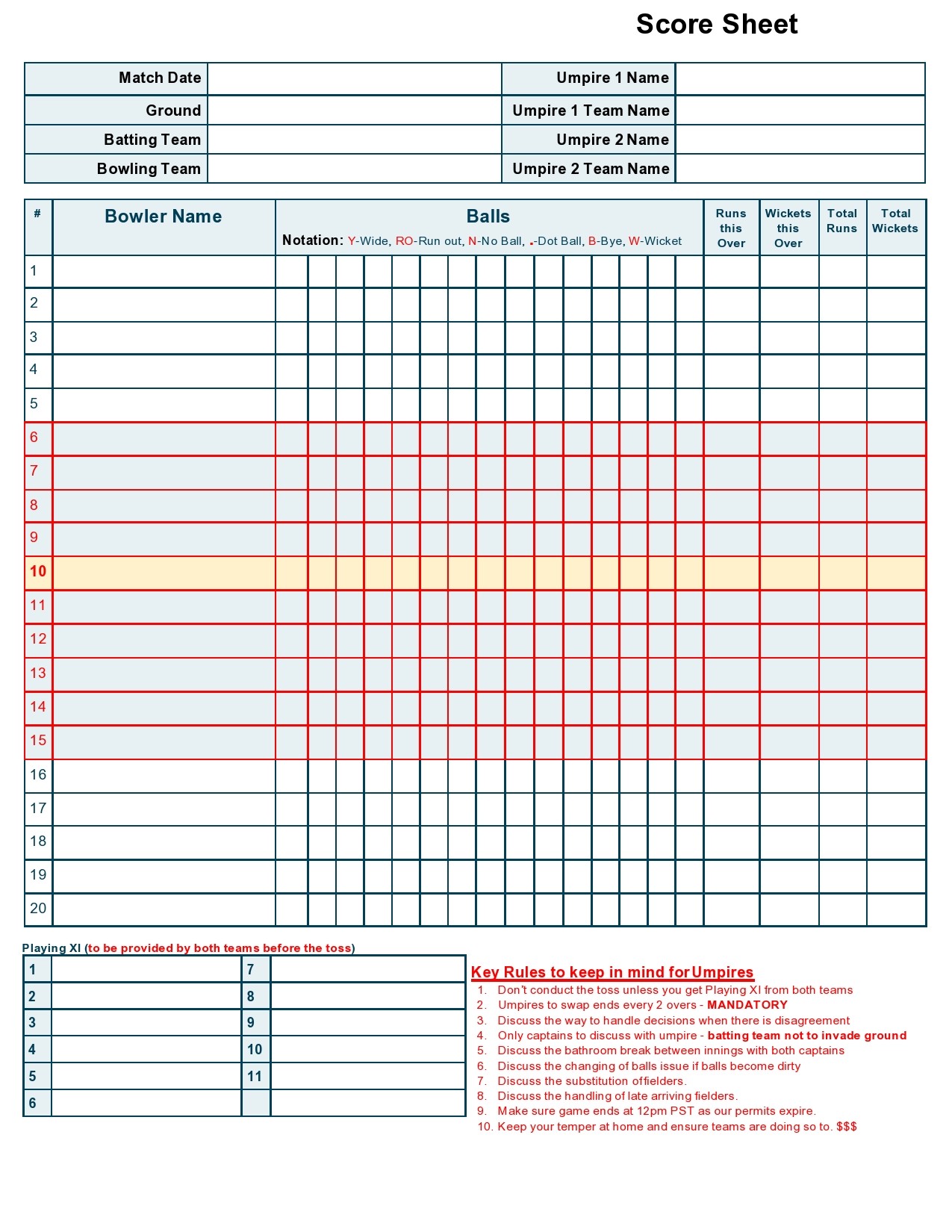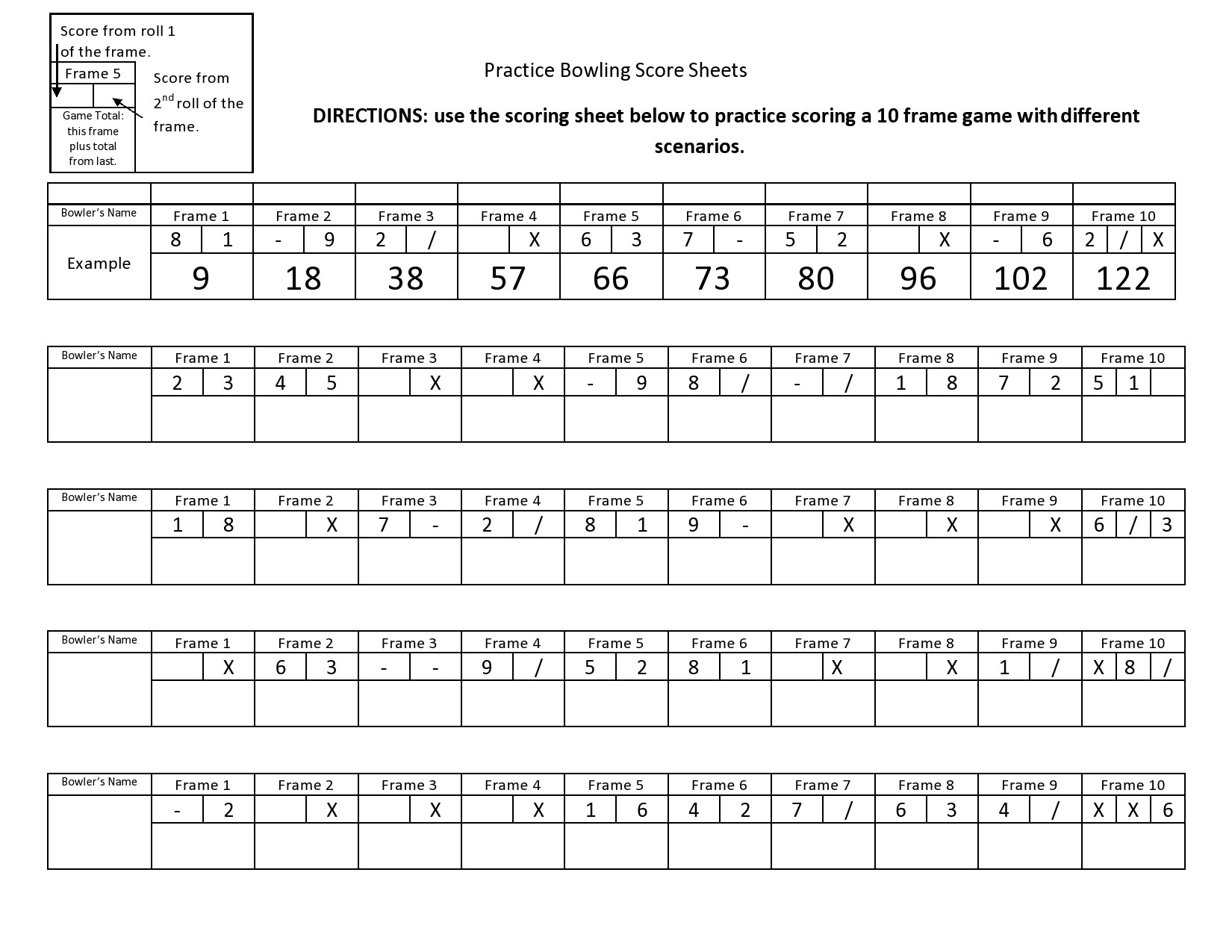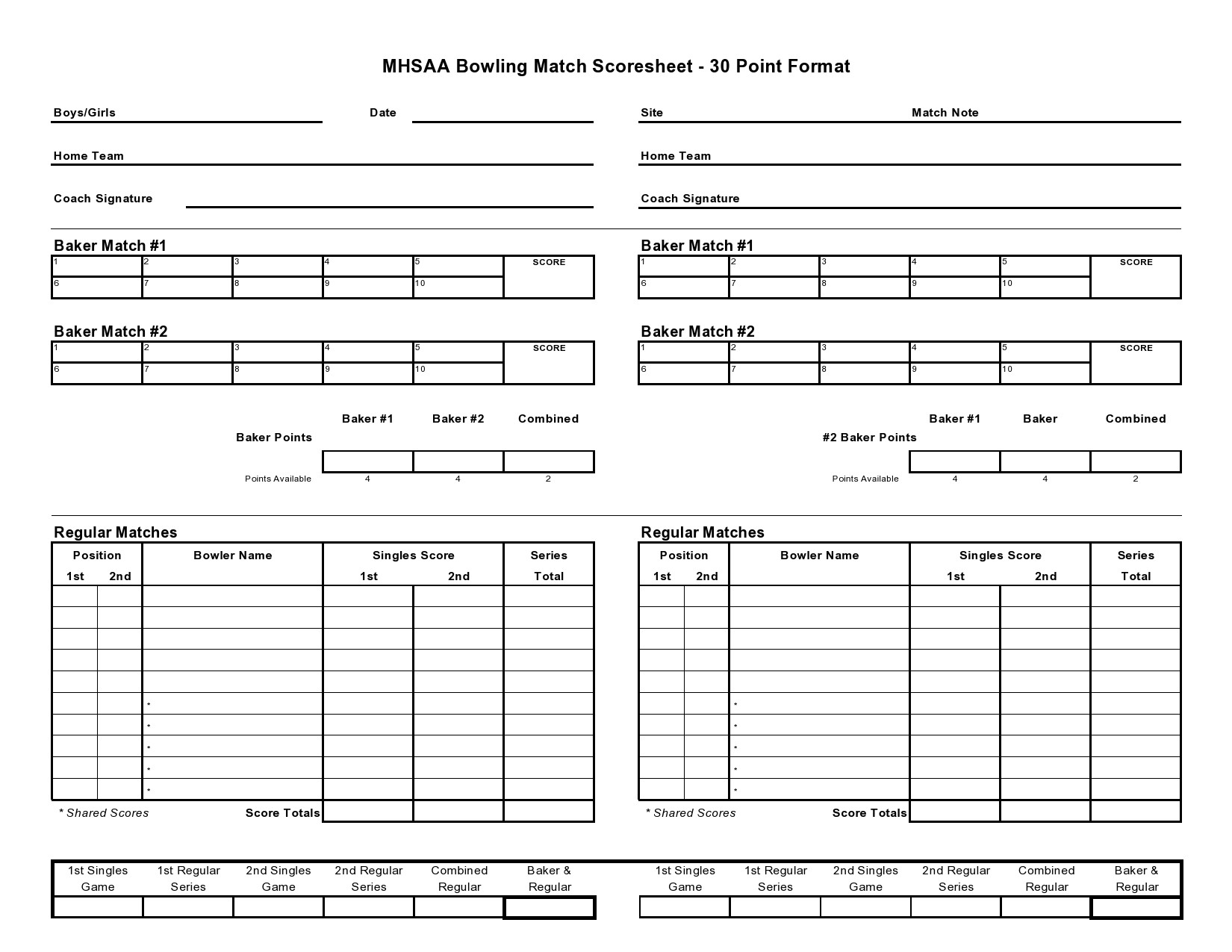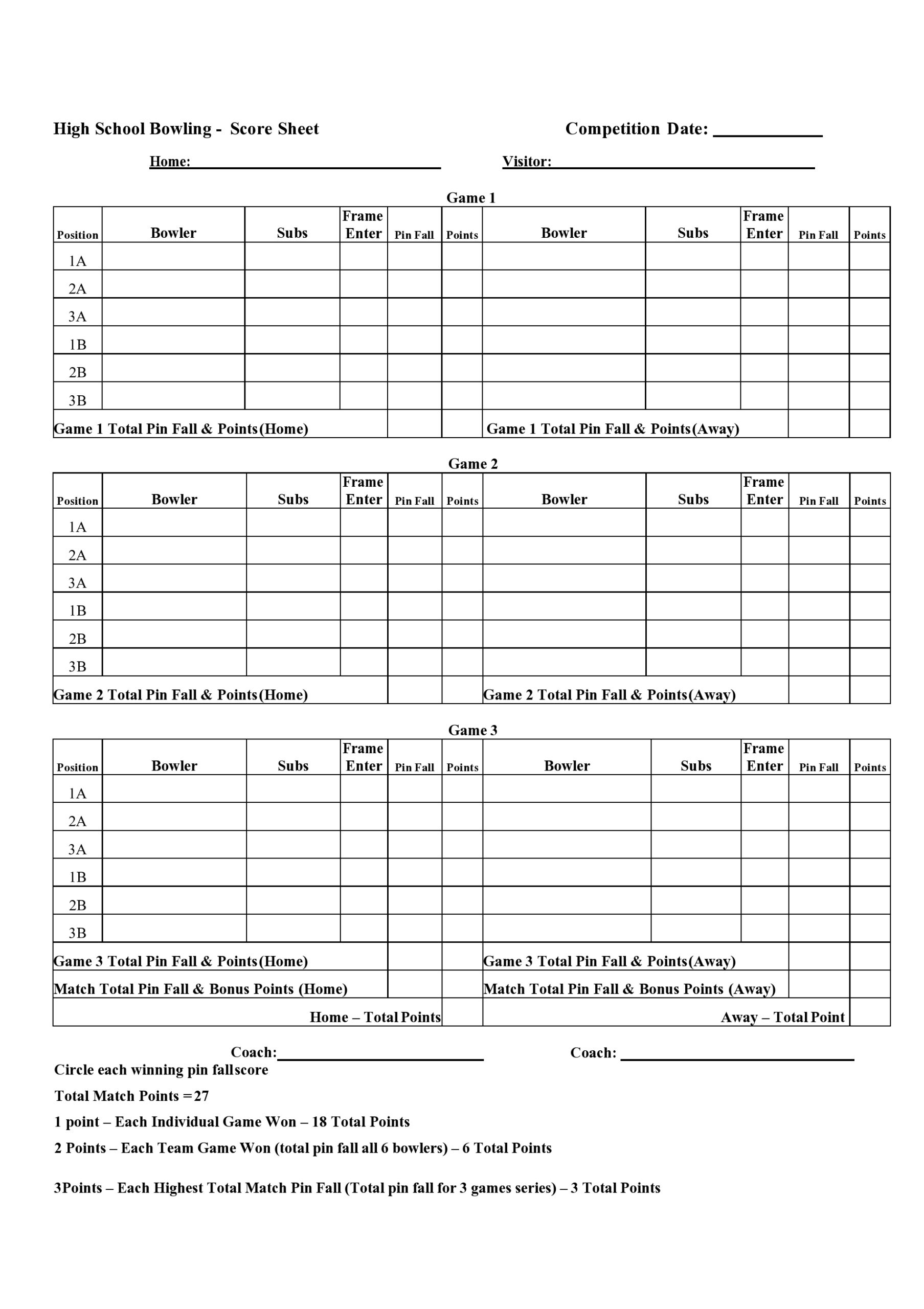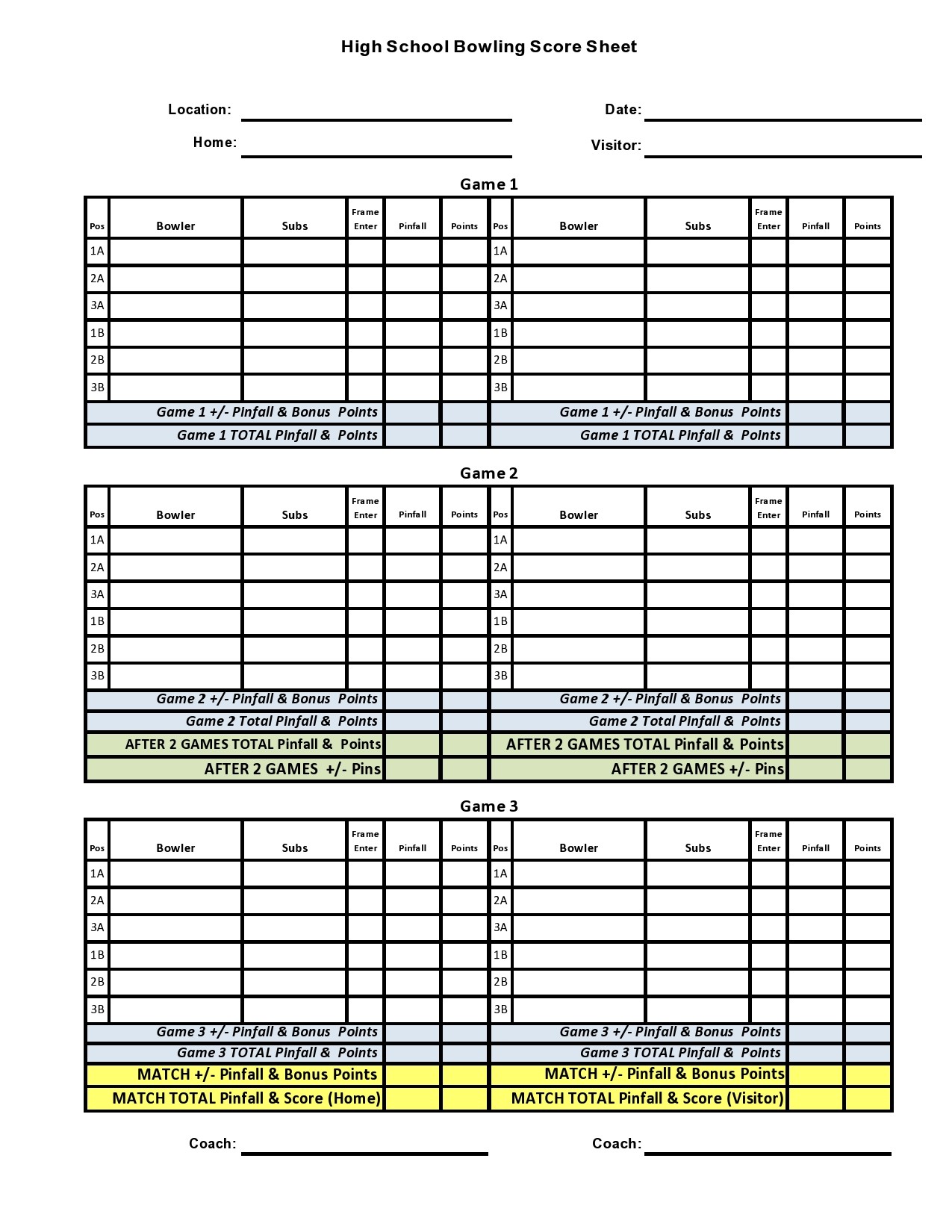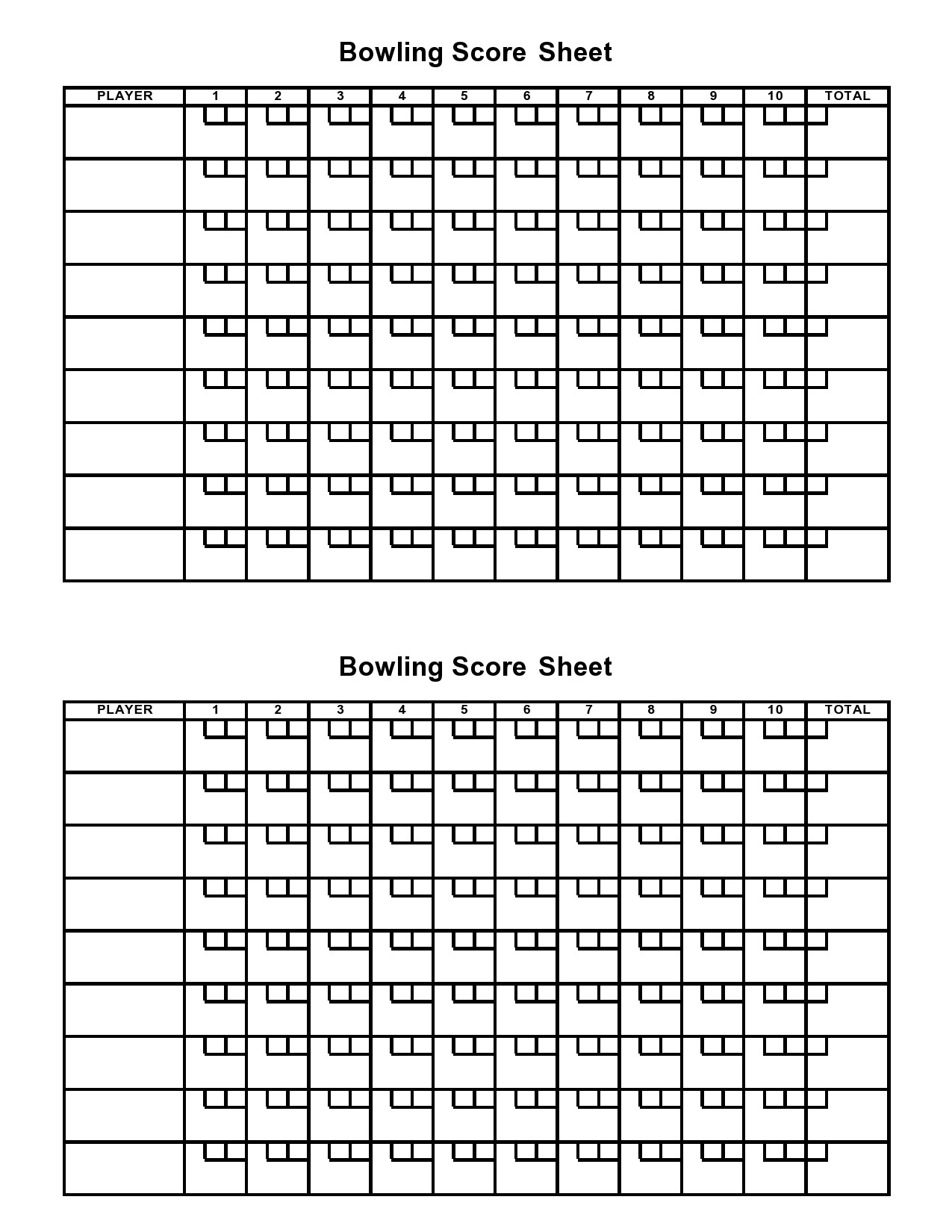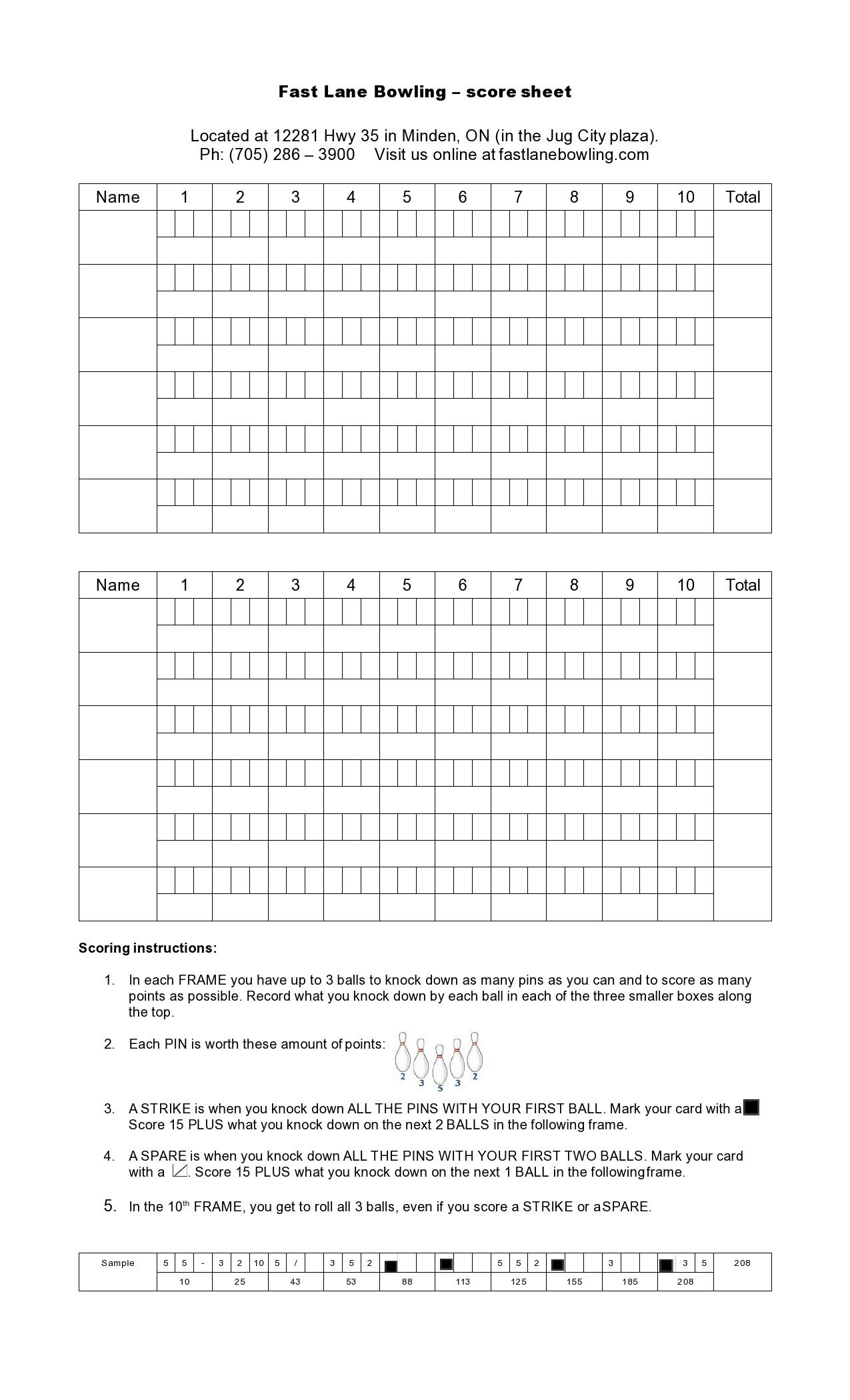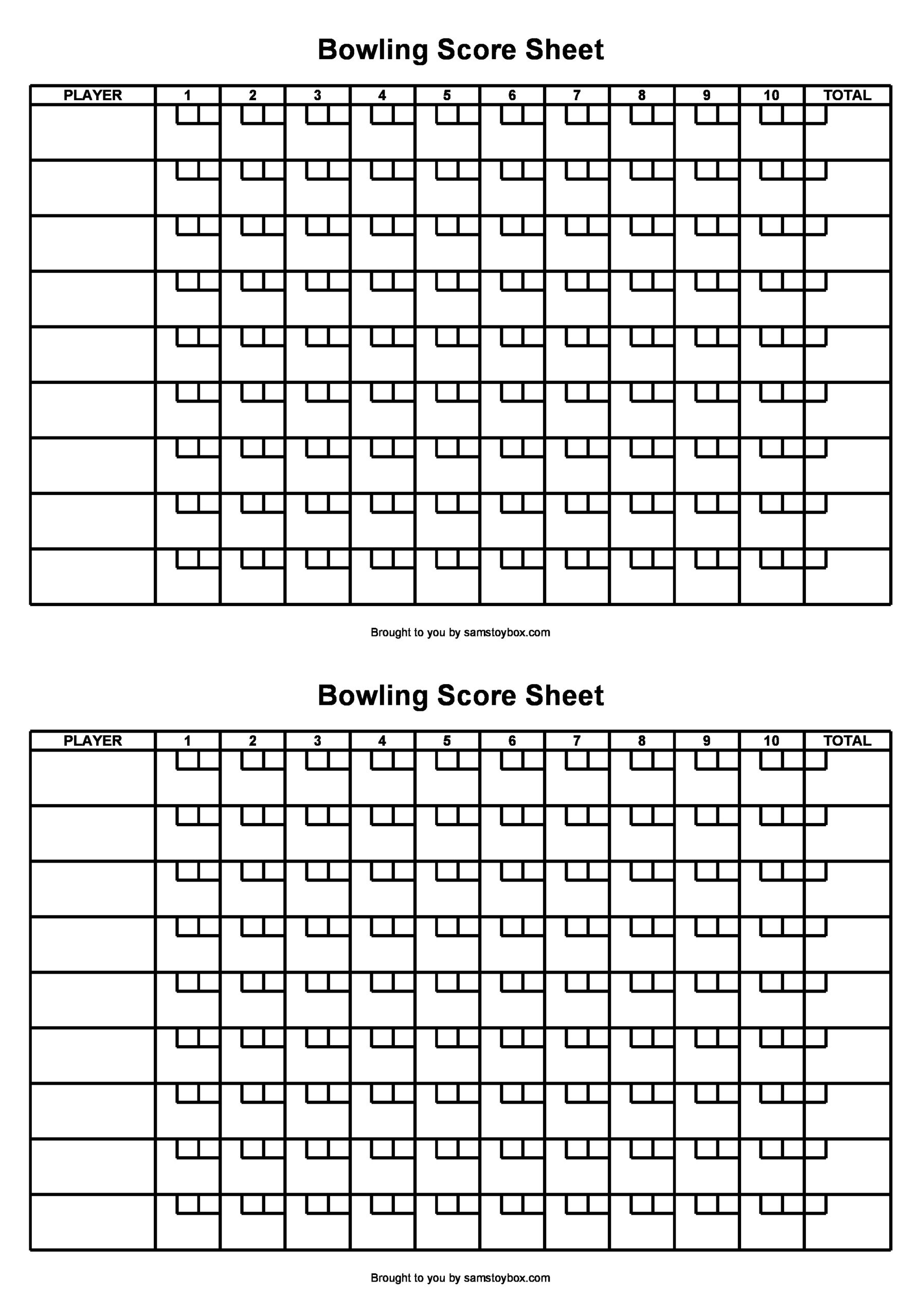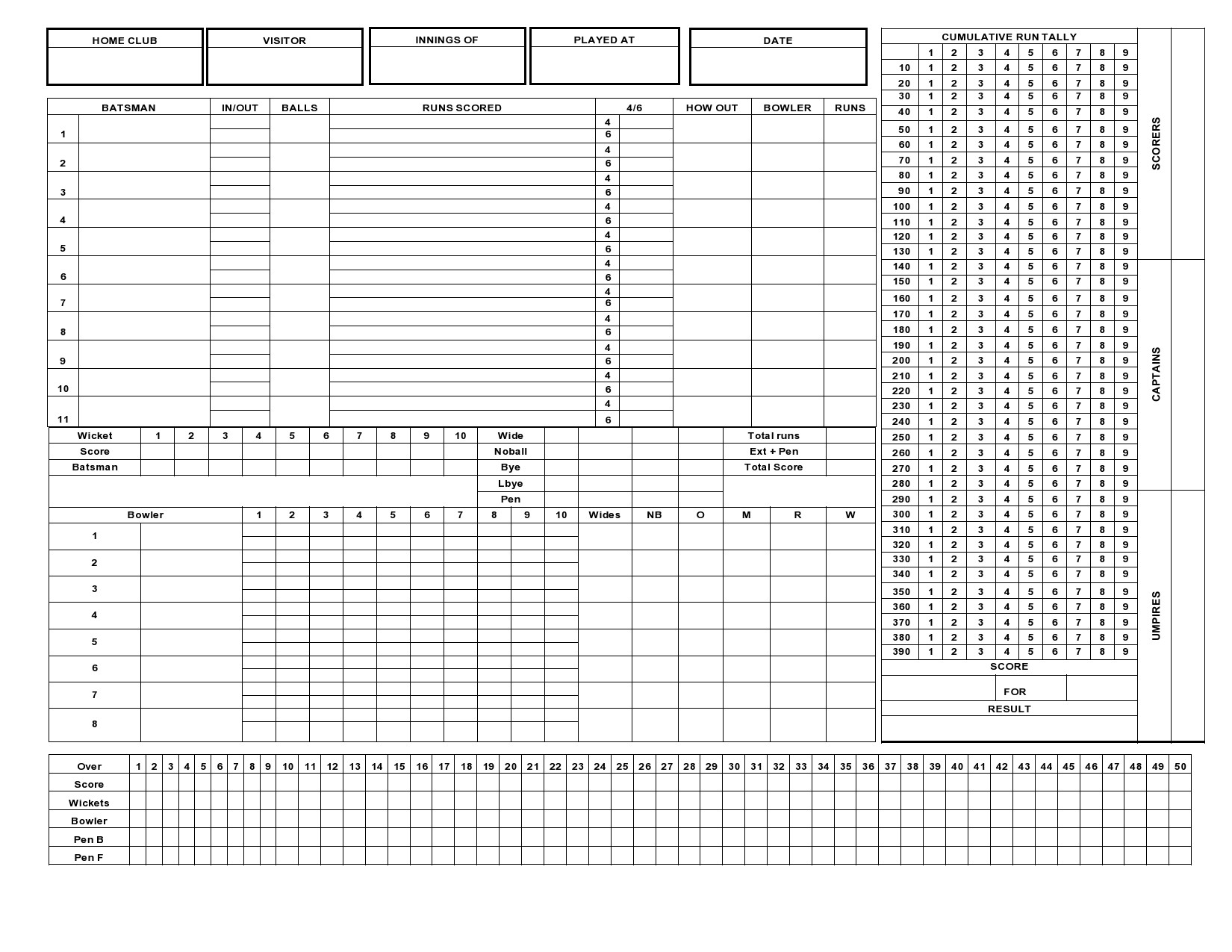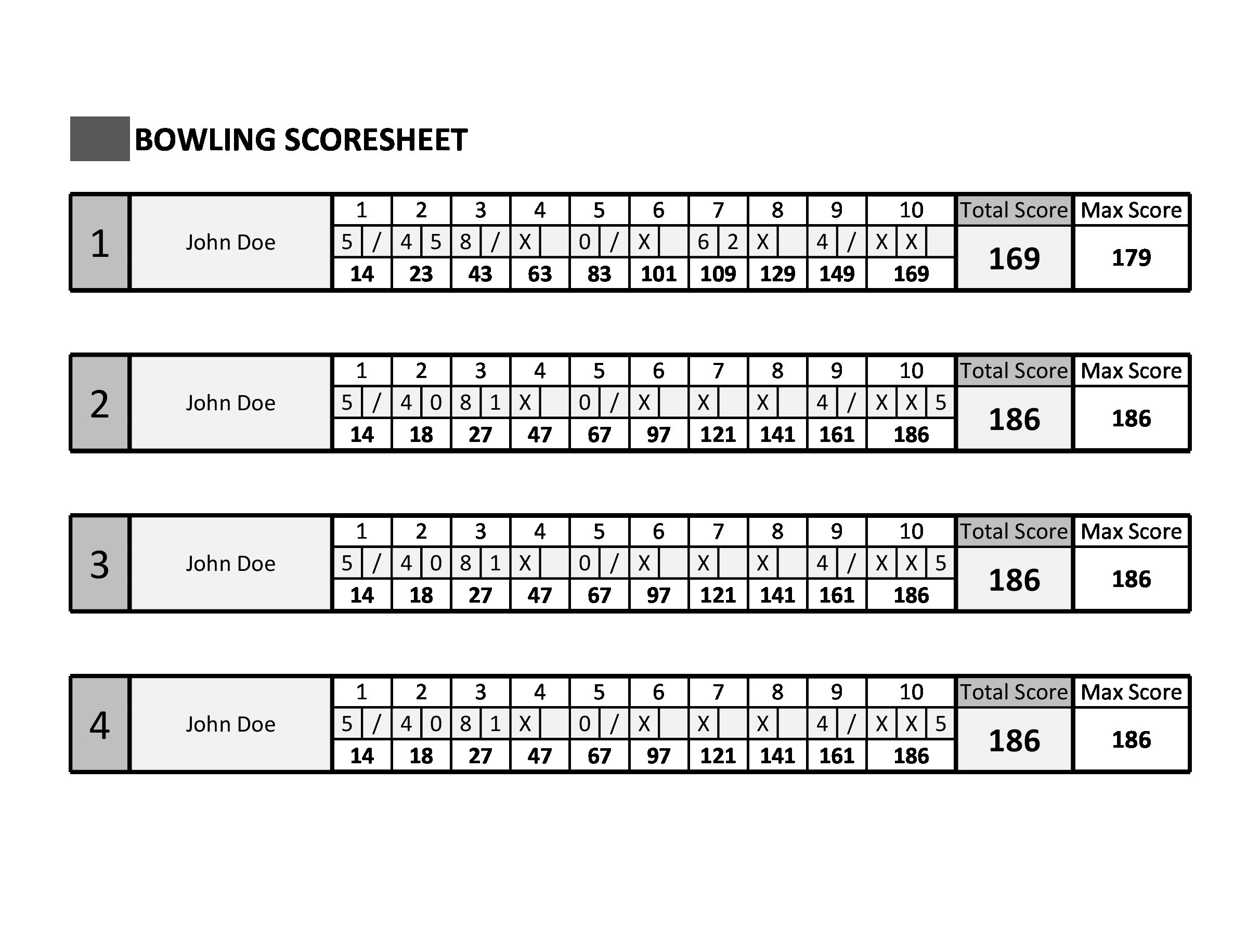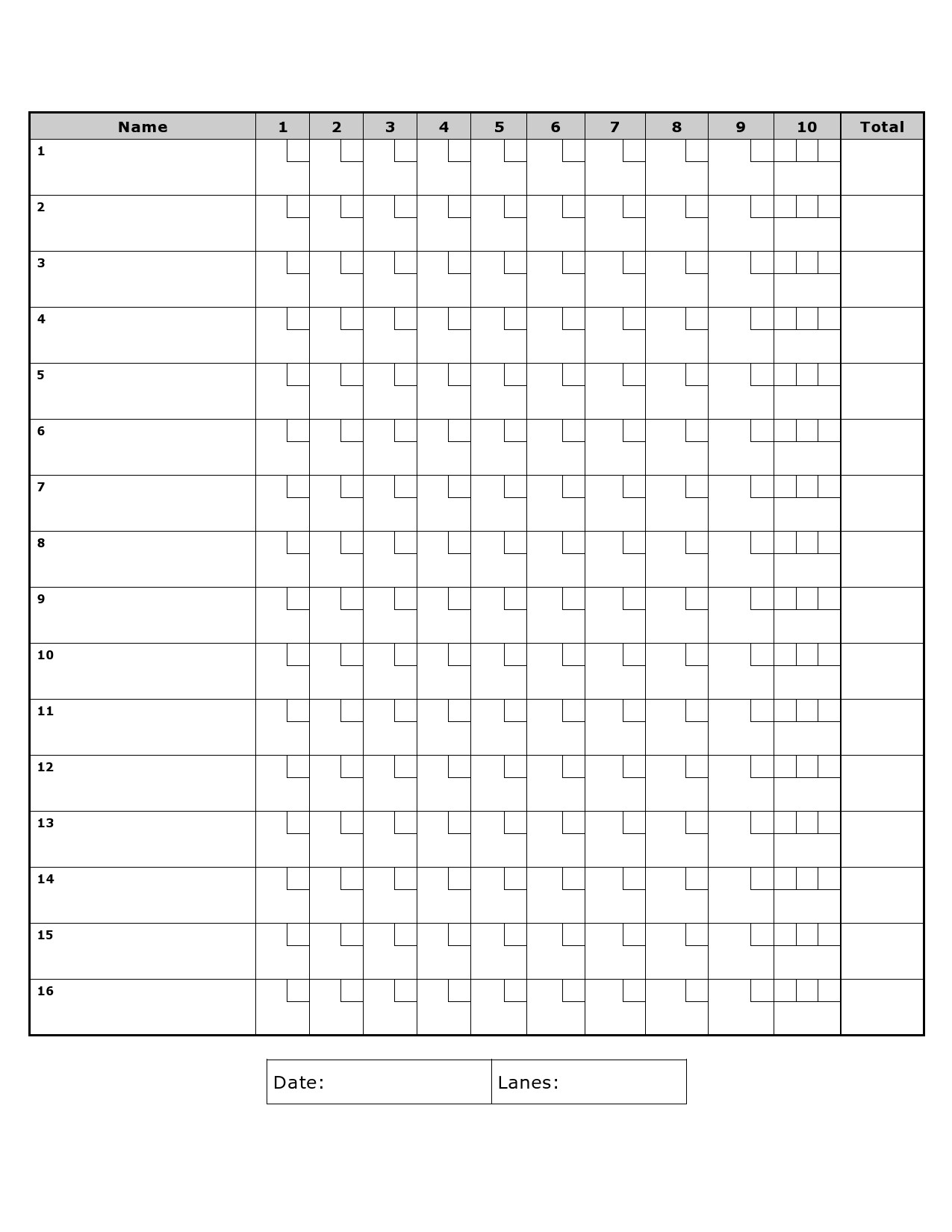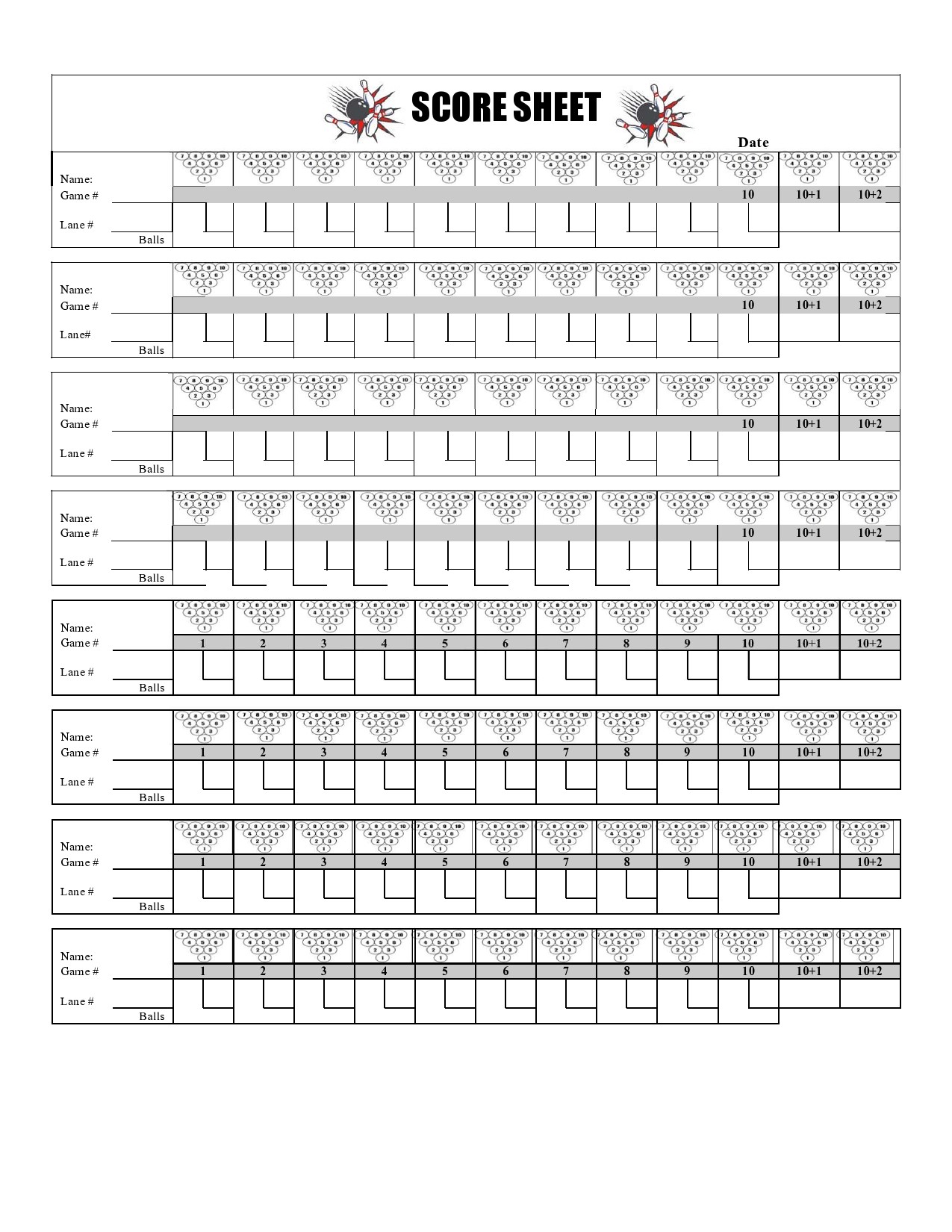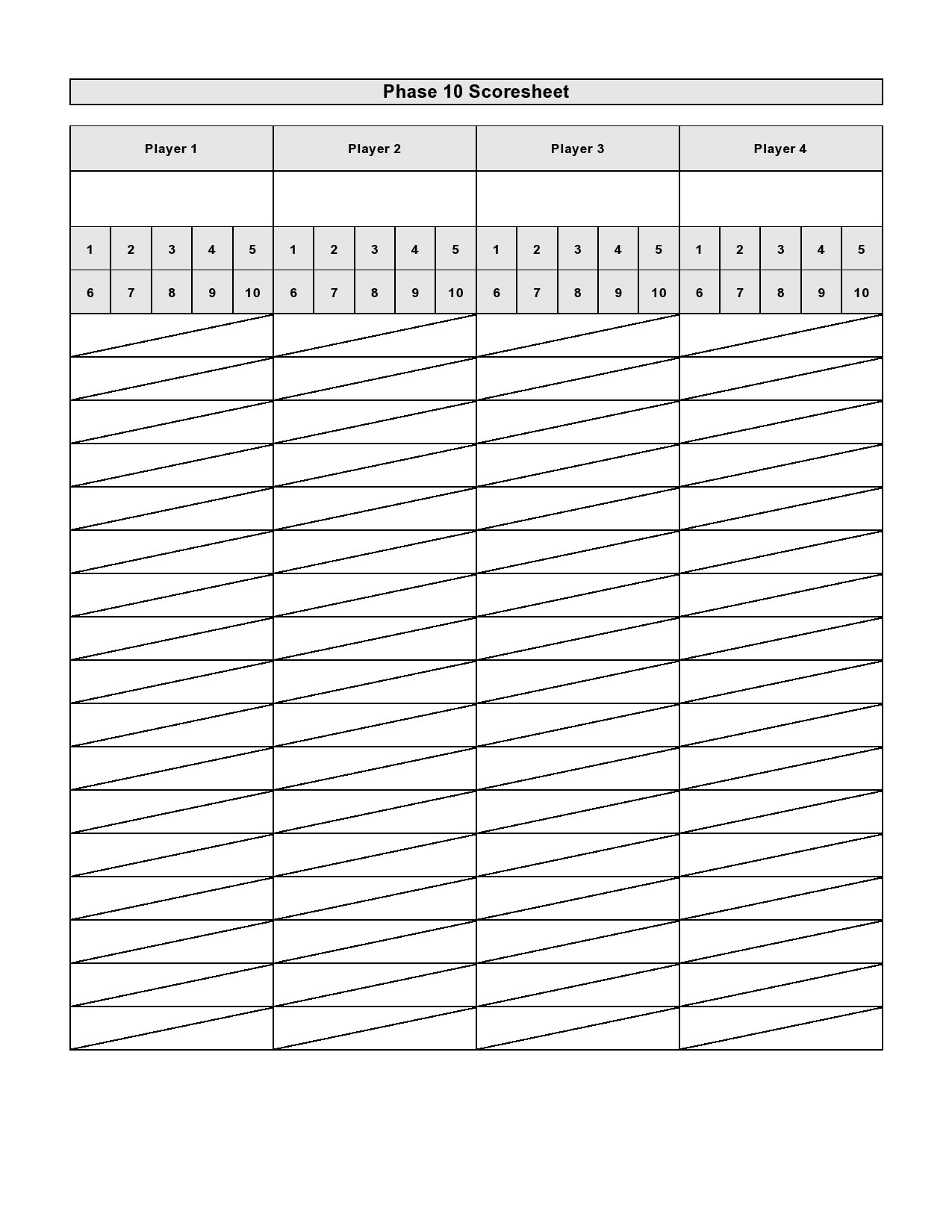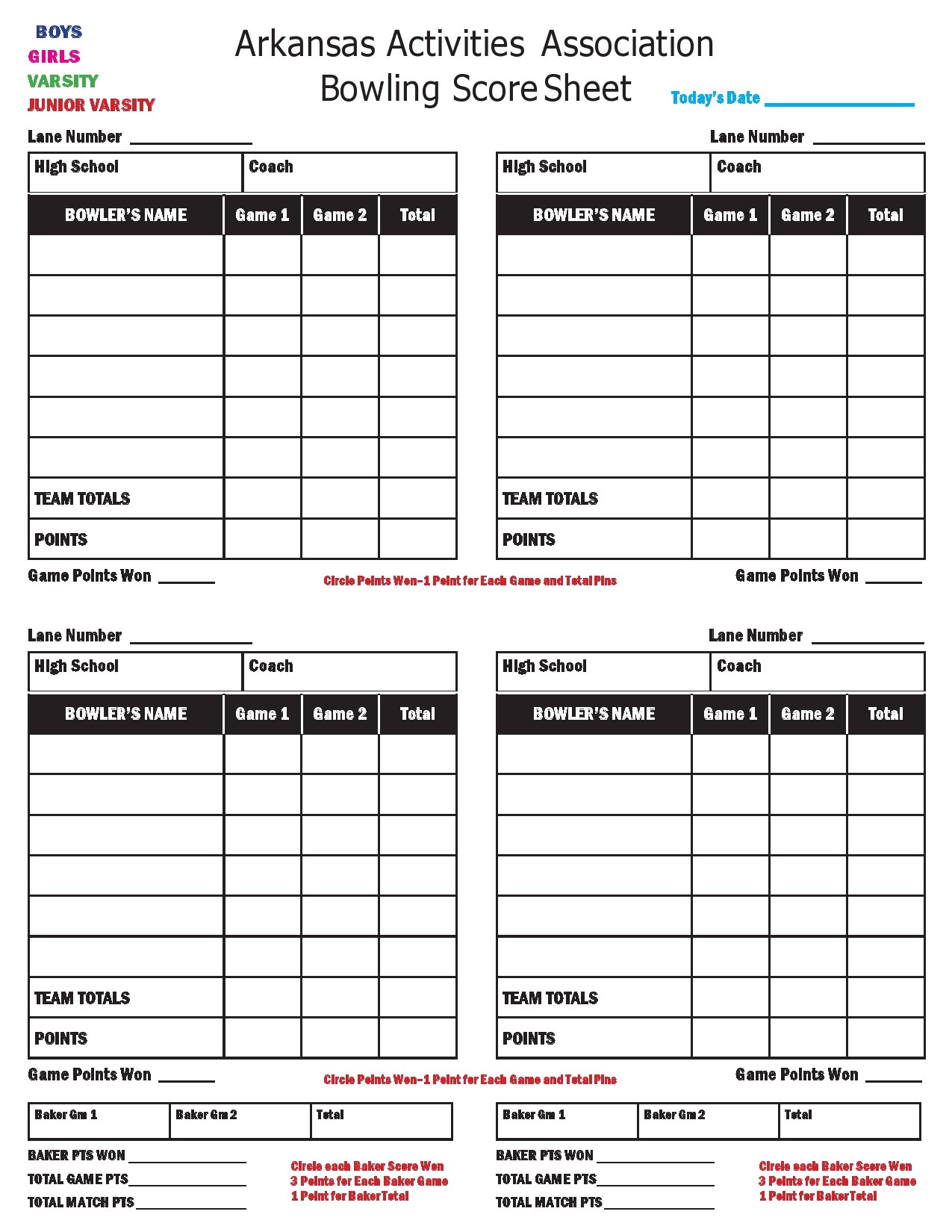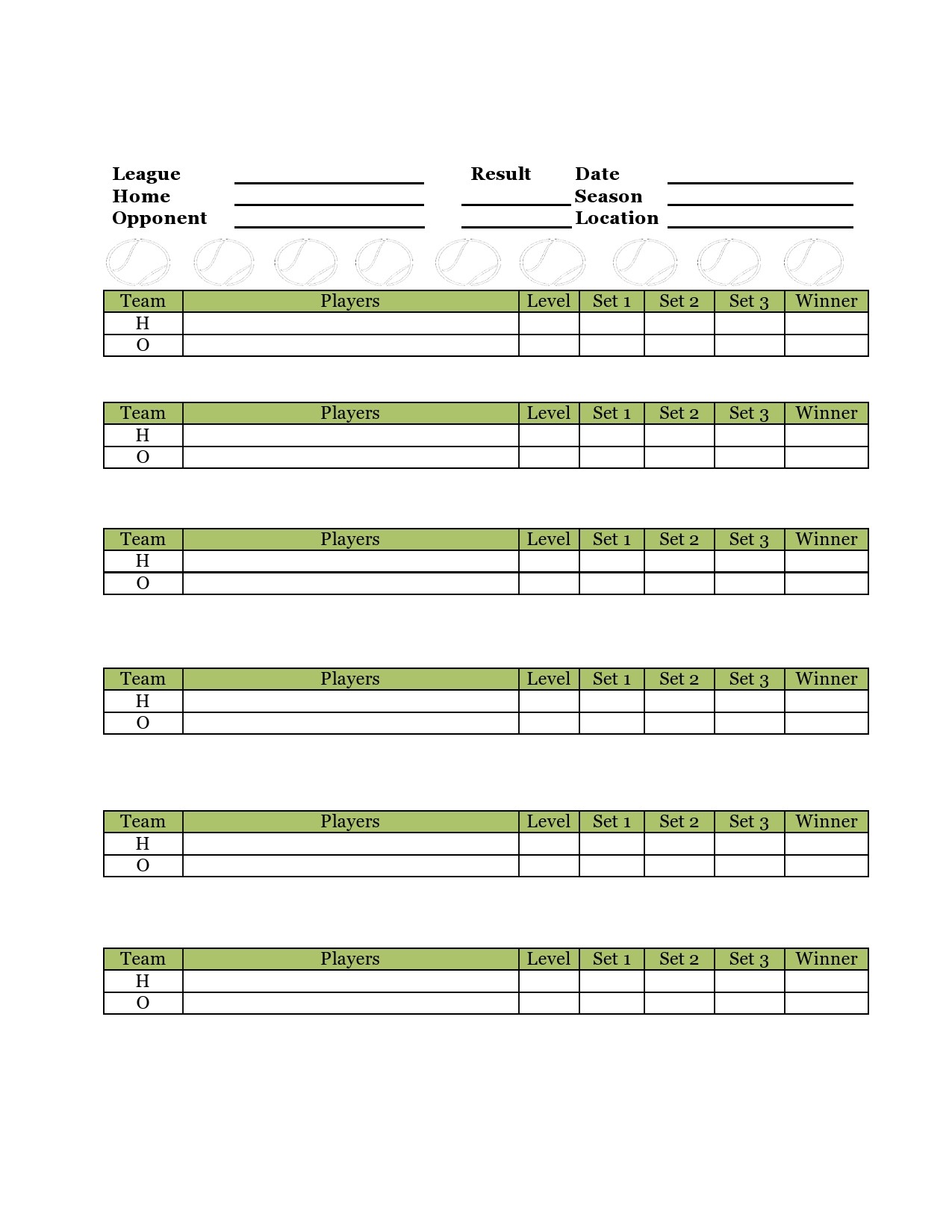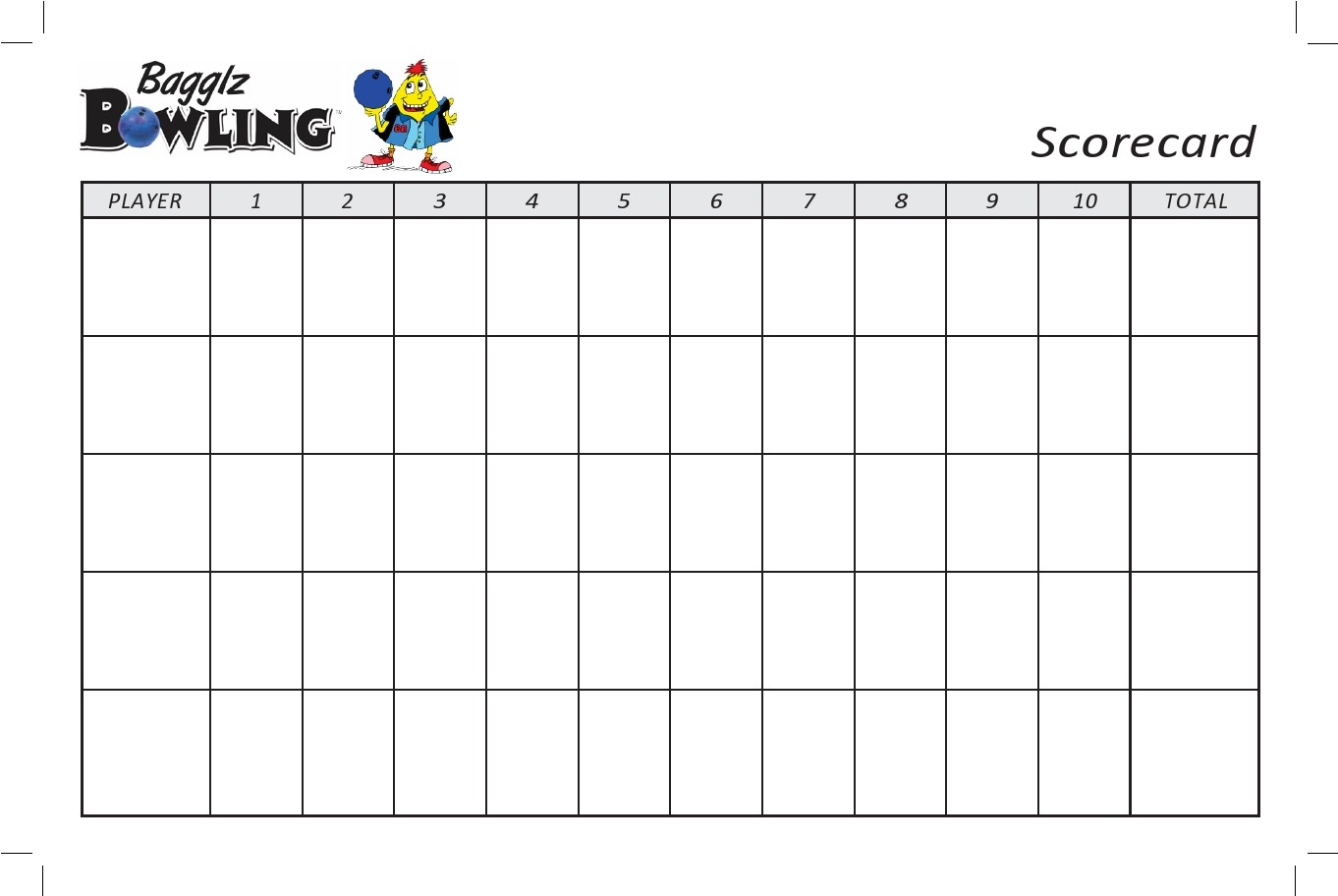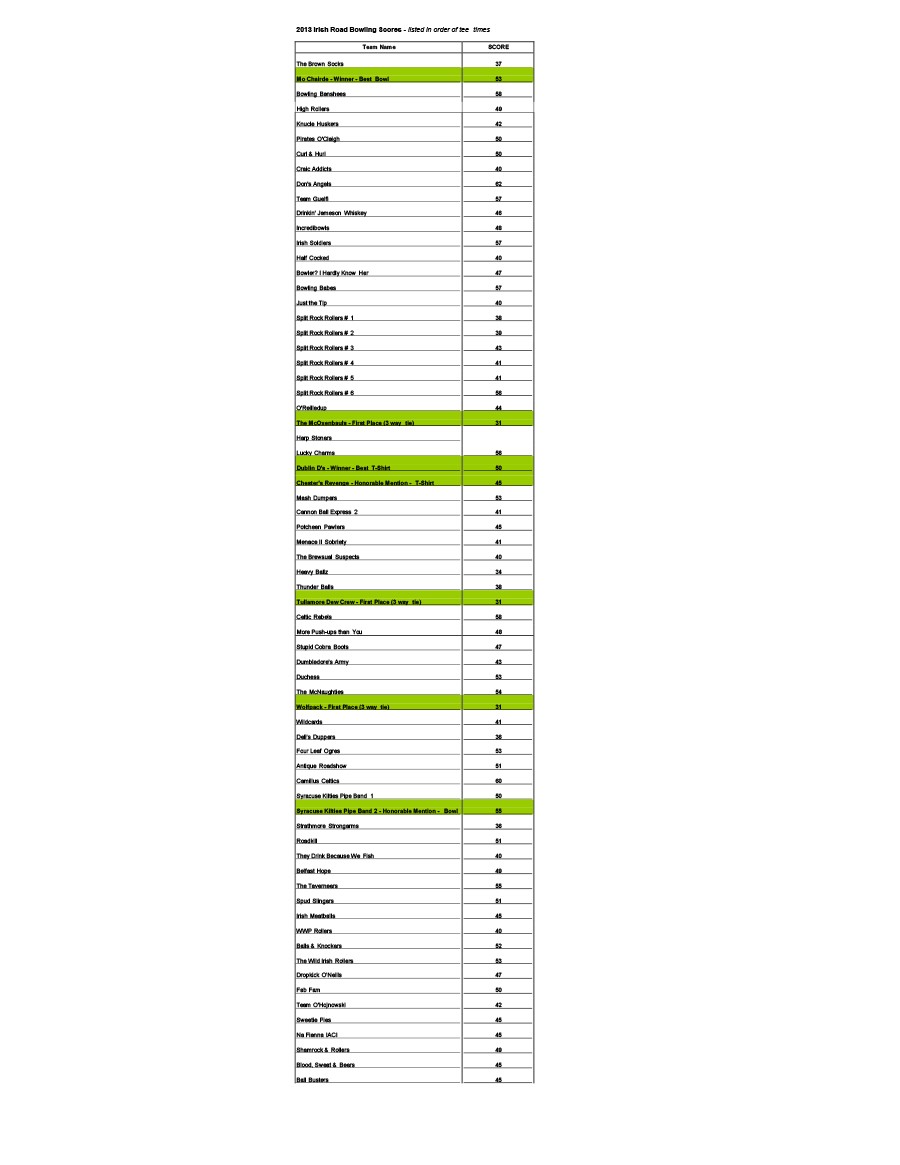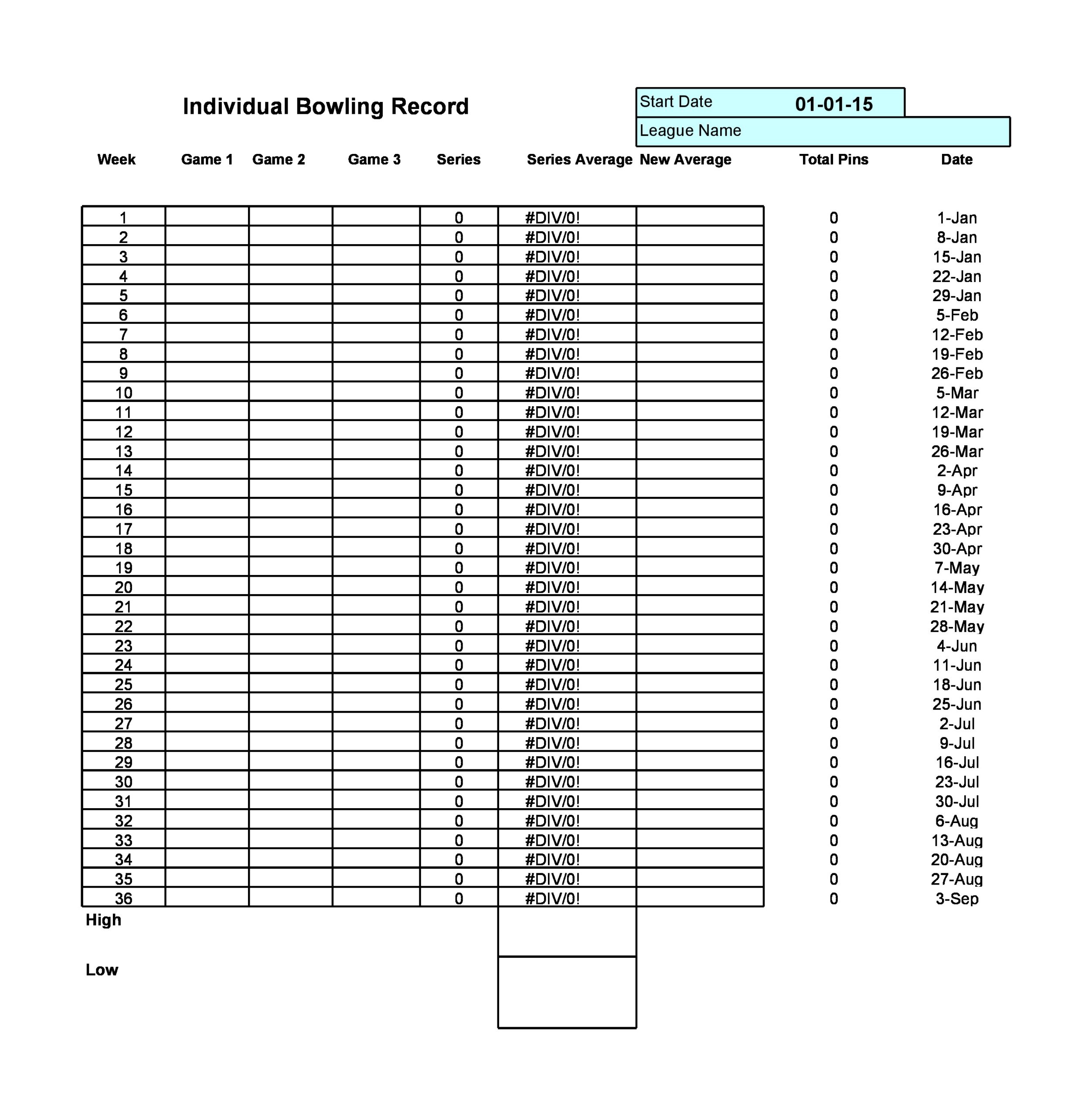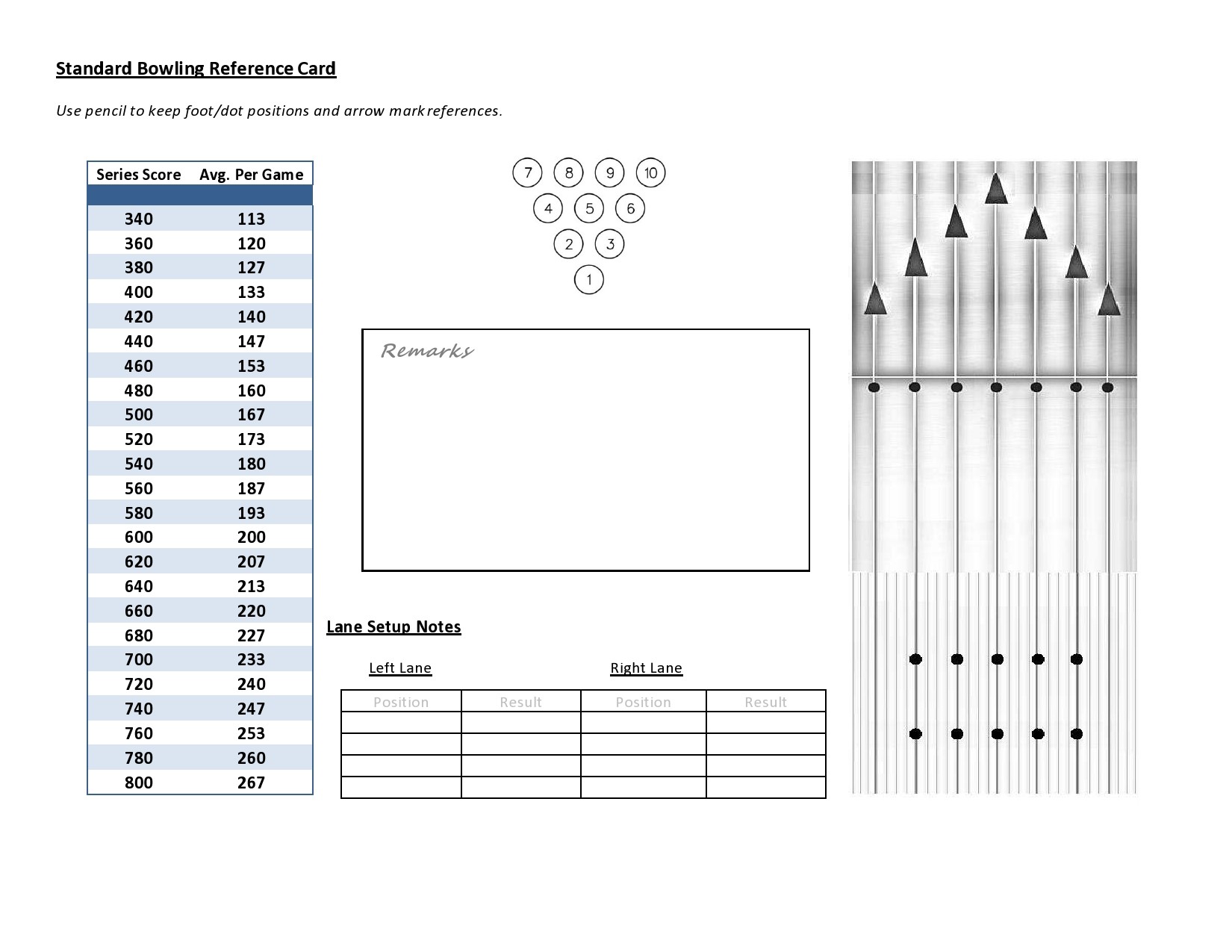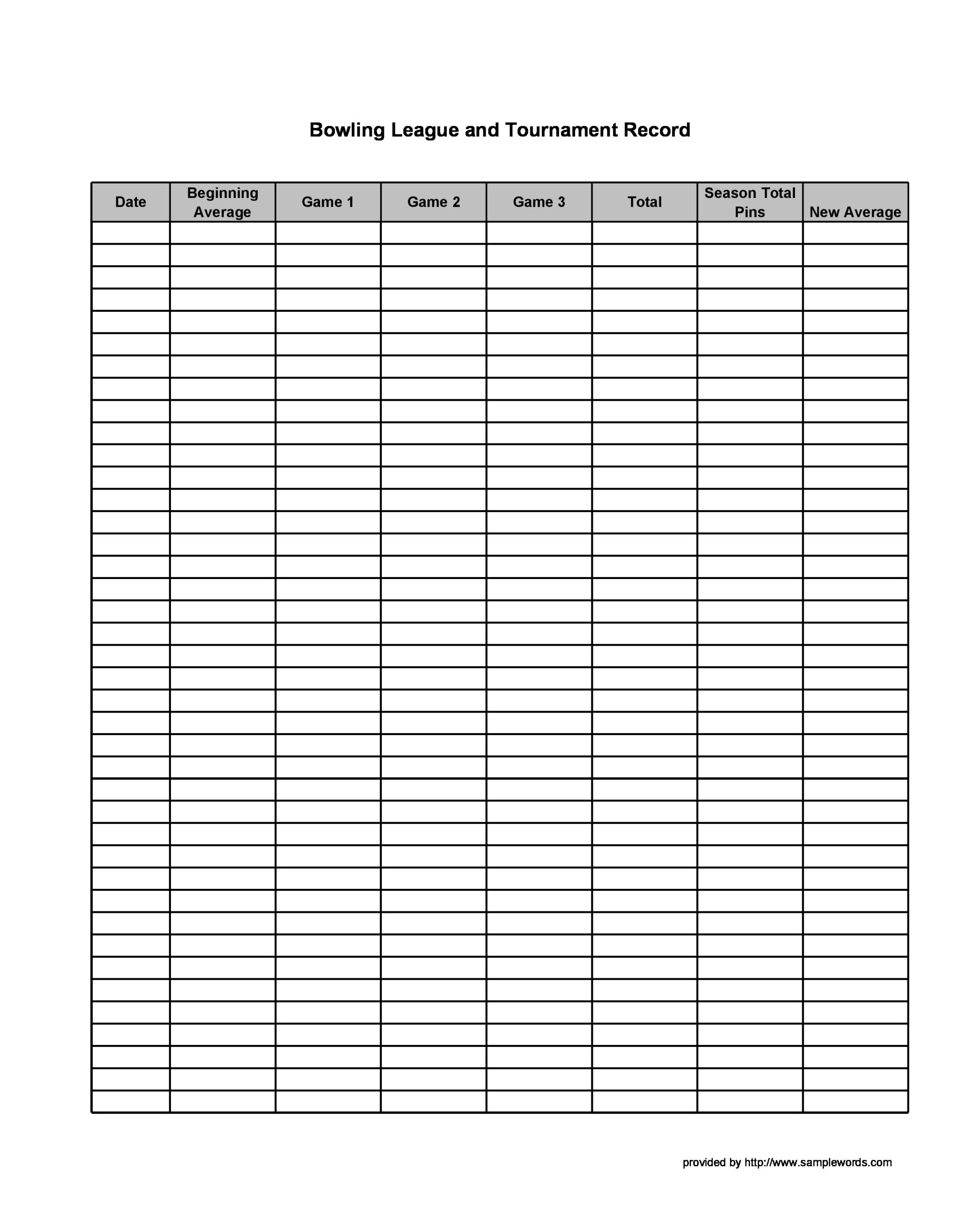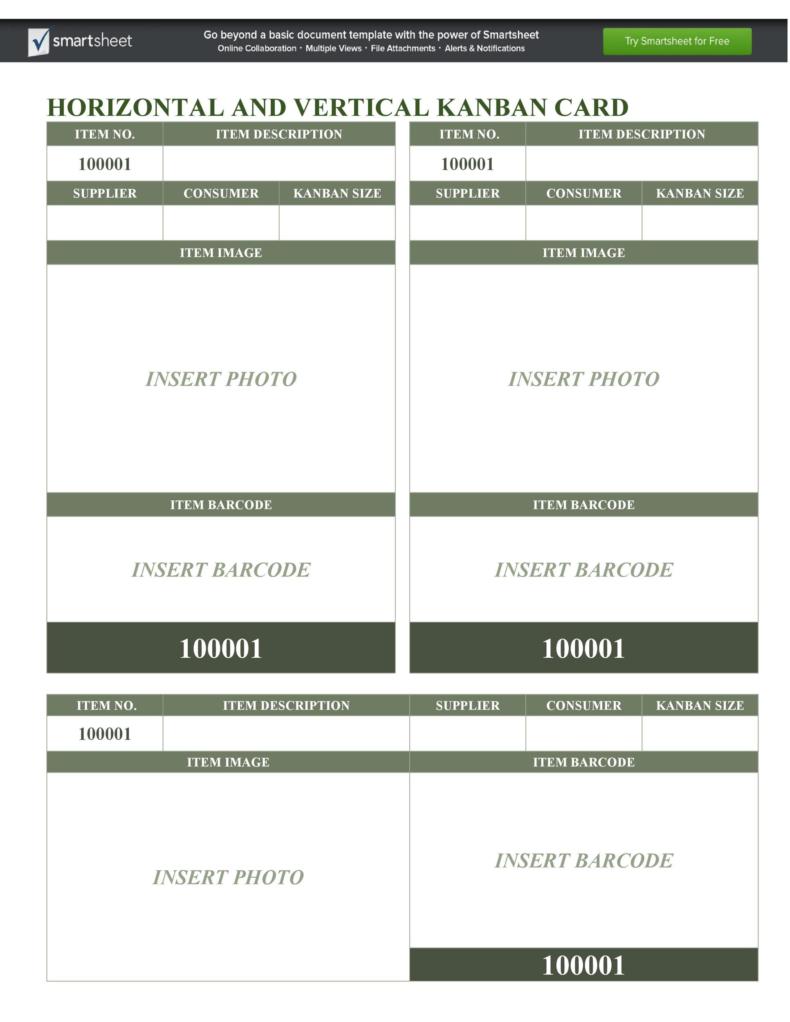Although computer scoring is very fast and convenient, it takes off some of the fun in scoring a bowling game. Even if you’re a computer whiz, it’s still a good idea to learn the fundamentals of scoring in the social game known as bowling. For this, you will need a bowling score sheet.
Table of Contents
Bowling Score Sheets
What are the rules of bowling?
Before you start using your bowling score sheet, you must learn the rules of the game first. There is nothing complicated about bowling. It consists of ten frames where you roll the ball twice in every frame. The goal is to try to knock all of the pins down and here are the basics:
- Strike, spare and open frame
- You score a strike if you succeed in knocking all of the pins down with your first roll.
- You score a spare if you knock all of the pins down with your second roll.
- After two rolls in your frame, if you can’t knock down all of the pins, then you get an open frame in the bowling score sheet template.
Bowling Scoring Cards
What is a bowling score sheet?
A bowling score sheet is essential in every bowling game, especially during tournaments. You use it to record the scores of each of the players. Through the records and the computations involved in a bowling score sheet example, you can easily determine the winner of the game.
For big games – the official tournaments – you would record the scores in a printable bowling score sheet and display these in a digital scoreboard. Since the audience is part of the tournament, they want to know who’s leading and who are the strongest competitors. Here are some things that describe this important sheet for scoring:
- It consists of a set of columns and rows.
- In the columns, you write the name of the players, columns for the total scores, and columns for the maximum score on the rows for each player.
- Each player also has ten columns that explain the details of the scores they made in each round.
- Each player gets their own score sheet that they fill up as the game progresses.
- You will count the scores in each round depending on how many bowling pins the players knocked down.
Bowling Score Sheet Examples
How do you score in bowling?
These days, most bowling alleys are already set up for digital scoring. In the absence of these, it becomes important to understand how to fill up a bowling score sheet. This ensures that you will correctly score the game even if it’s your first time playing.
Download a printable bowling score sheet and learn how to score individual frames. As you go along, you will add the scores for those frames. This gives you the total score at the end of the game. Just remember that strikes and spares have their own special rules. When using a bowling score sheet template, follow these scoring rules:
- Scoring the individual frames
On the far-left side of the bowling scorecard is a column with empty spaces. This is where you write the names of the players in the game. The next columns to the right of the bowling scoring card are 10 score frames. You use each frame to total the score of a one-turn frame.Use the frame that corresponds to the turn you’re taking. You will find a number above each of the columns of your card. These numbers progress from left to right beginning with “1” and going up to “10.” Tally each of the player’s scores within the scorecard that matches the frame they’re bowling.
Write down the score for your first roll in the upper left box for that turn. Each player gets to bowl twice in each turn except in the 10th frame unless they knock down all of the pins with their first ball.
Each player bowls a maximum of 21 times for every game. It’s important that you write down each roll individually. Write down the number of pins you get on your first roll in the upper left box.
Write the score of the second roll in the upper right-hand box for the turn. After rolling for the second time, add your score to the card. Make sure you only record the number of pins you knocked down in your second roll. You shouldn’t record the total number of pins you knocked down for the turn.
Write an “x” in the tiny box in the top-right of the scorecard frame if you get a strike. A strike means that you knocked all of the pins down on your first roll. While the tiny box in the top-right of the scorecard frame is usually reserved for scoring information relating to your second roll, scoring rules have an exception for strikes.
Write a forward slash “/” in the tiny box in the top-right corner of the scorecard frame if you get a spare. This means that you didn’t knock all of the pins down on your first roll, but you did on the second.
Indicate a foul with the letter “F.” If you step over the foul line – the line beyond which players should not step – on your first roll for a turn, write an “F” in the upper-middle box. If you step past the line on your second roll for the same turn, write an “F” inside the tiny box in the upper-right of the scorecard frame.
Mark your scorecard with a dash “-” if you miss all of the pins. If the ball goes into the gutter or if you miss all of the pins, indicate the miss with a horizontal dash “-”. If you miss all of the pins on one roll but you knock down some pins on your other turn, record the score for the roll where you successfully knocked over some pins. - Tallying your score
Add the total number of pins you have knocked down in your two rolls when your turn has completed. Write your score at the bottom of the scorecard frame right below the numbers for the turn you completed.Score a spare by adding 10 to the total number of pins you knock down on your next roll. A spare is when you knock the remaining pins down on your second roll of the same turn. In such a case, wait to calculate your score for that turn until you roll the first roll for your next turn. Then write your score in the frame of the previous turn.
Score a strike by adding 10 to the sum of the next turn. A strike is when you knock all of the pins down on your first roll. The score of a strike can range between 10 and 30 points, depending on your next roll. In such a case, wait to calculate your score for that turn until have completely finished your next turn. - Calculating your total
Only use the upper-right corner box in your tenth turn if you roll a strike or a spare. The third box in the tenth turn is the “fill box” and it helps you decide what your strike or spare will be worth if you roll one in the tenth turn.Determine the winner of the game by comparing the final score of the tenth frame. For example, if your frame score for the tenth turn is 120 and your friend’s score is 110, you’ve won!
What is a good score for bowling?
Bowling is a very social sport as you would see groups of friends or families engaged in this game during their free time. This fun sport doesn’t require athleticism to play. Moreover, even for newbies, you don’t need any start-up investment, as long as, you don’t mind renting a bowling ball and used shoes.
Even these days, events like birthday parties or midnight bowling tournaments have remained popular at bowling centers all over the nation. Bowling is a lot of fun and the events that go with the game are a lot of fun as well. This game’s main purpose is for the enjoyment of everyone who participates, whether it is your first time playing the game or you’re a regular player.
Of course, many of us have an innate nature of being too competitive to just enjoy it and write down scores on the bowling score sheet. No matter how socially satisfying the game is, you don’t want to lose a game by a lot! Because of this, you might wonder, “What is a good bowling score, anyway?”
To find a good score to see in your bowling score sheet template, it makes a lot of sense to know the scores of professionals, right? These, of course, are those who play for money and are the best players in the game. As of last season, the highest average among the players of the Professional Bowler’s Association with more than100 games is 226.
Of course, you don’t consider yourself a professional bowler (unless you are), but you can probably gauge your games better by comparing your average with others. According to reports from several bowling alley coaches and owners, the typical score of a good bowler would have an average between 130 and 150.

